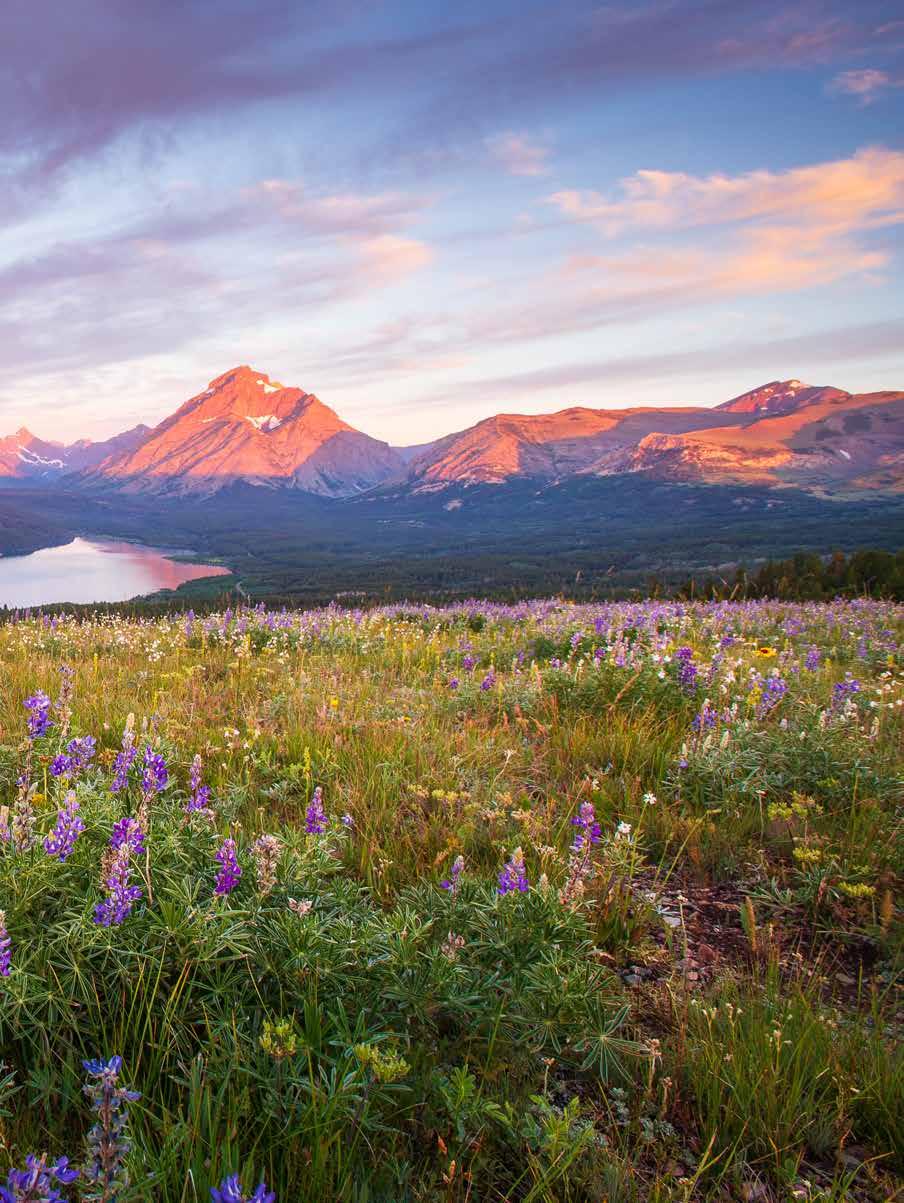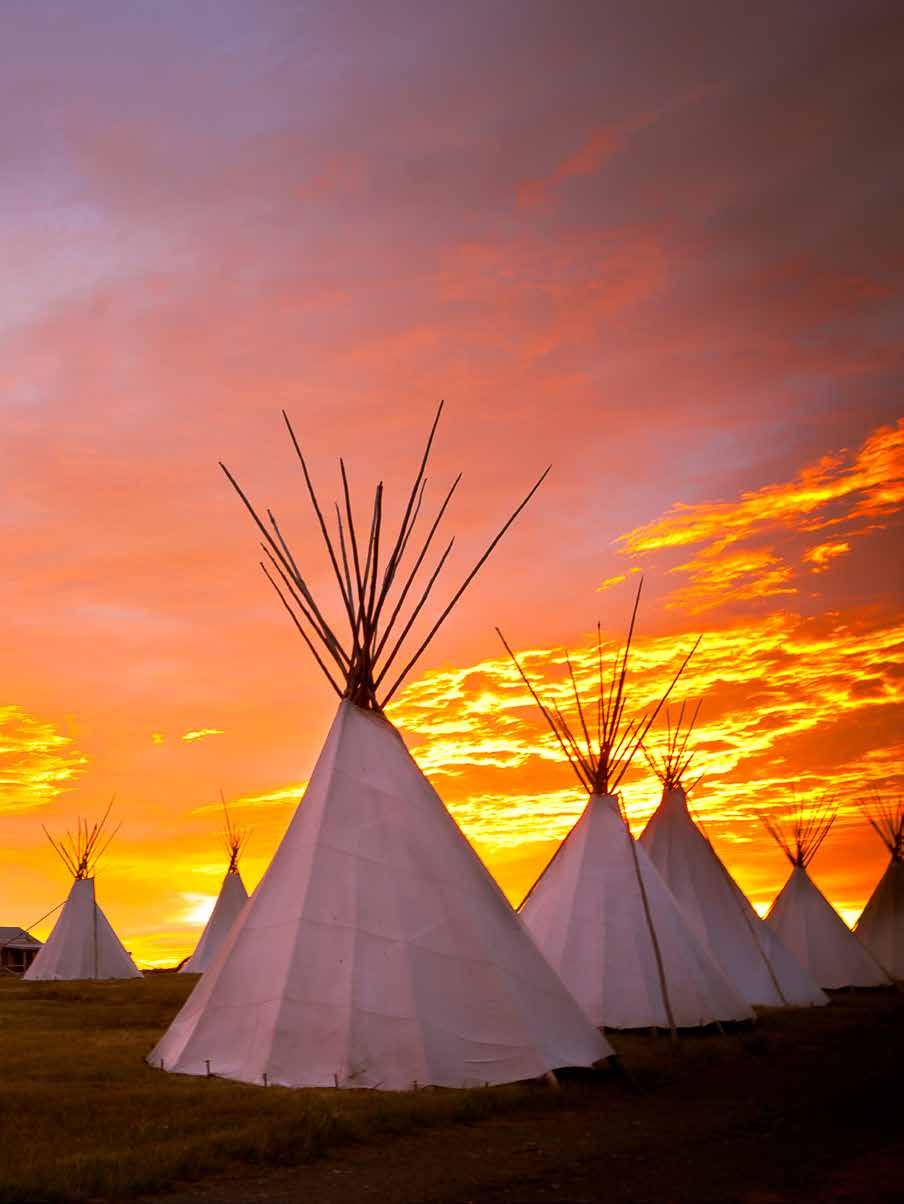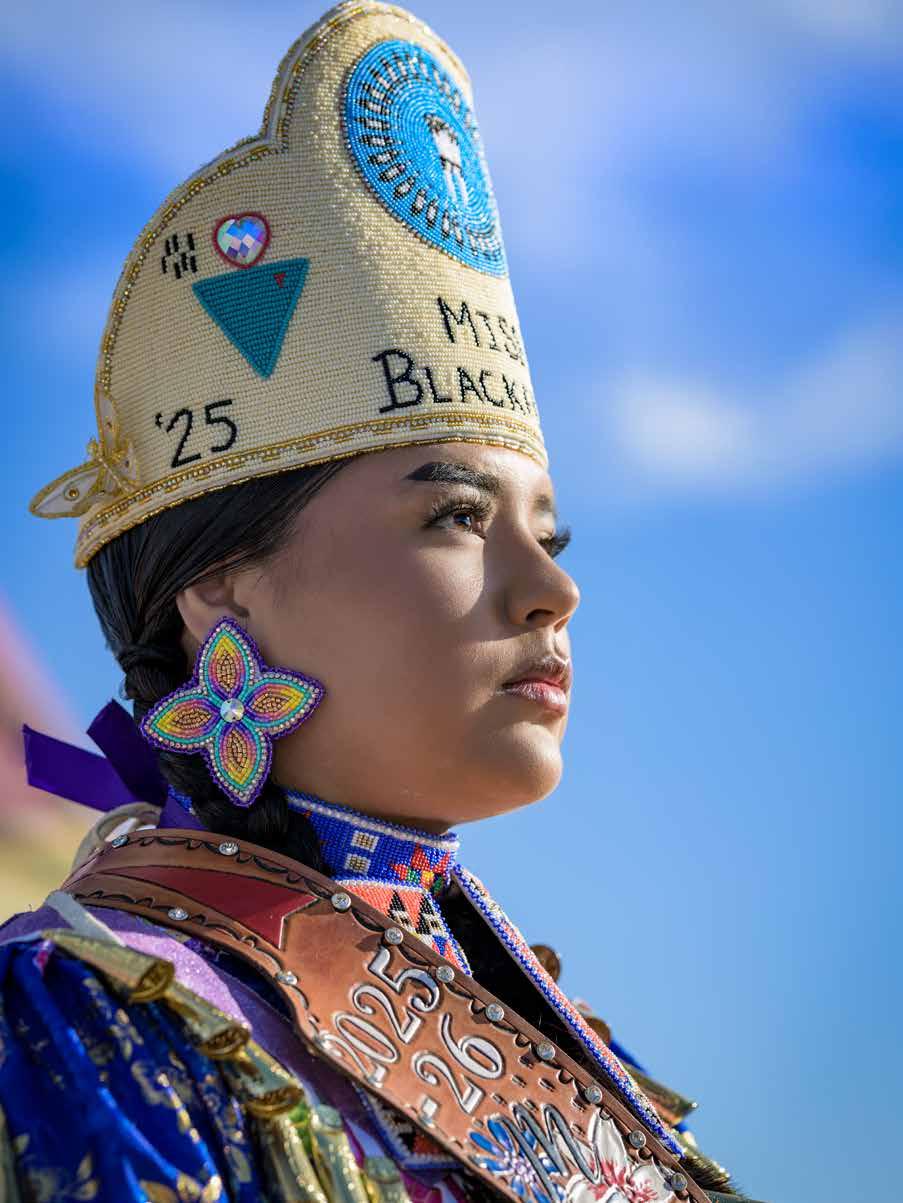
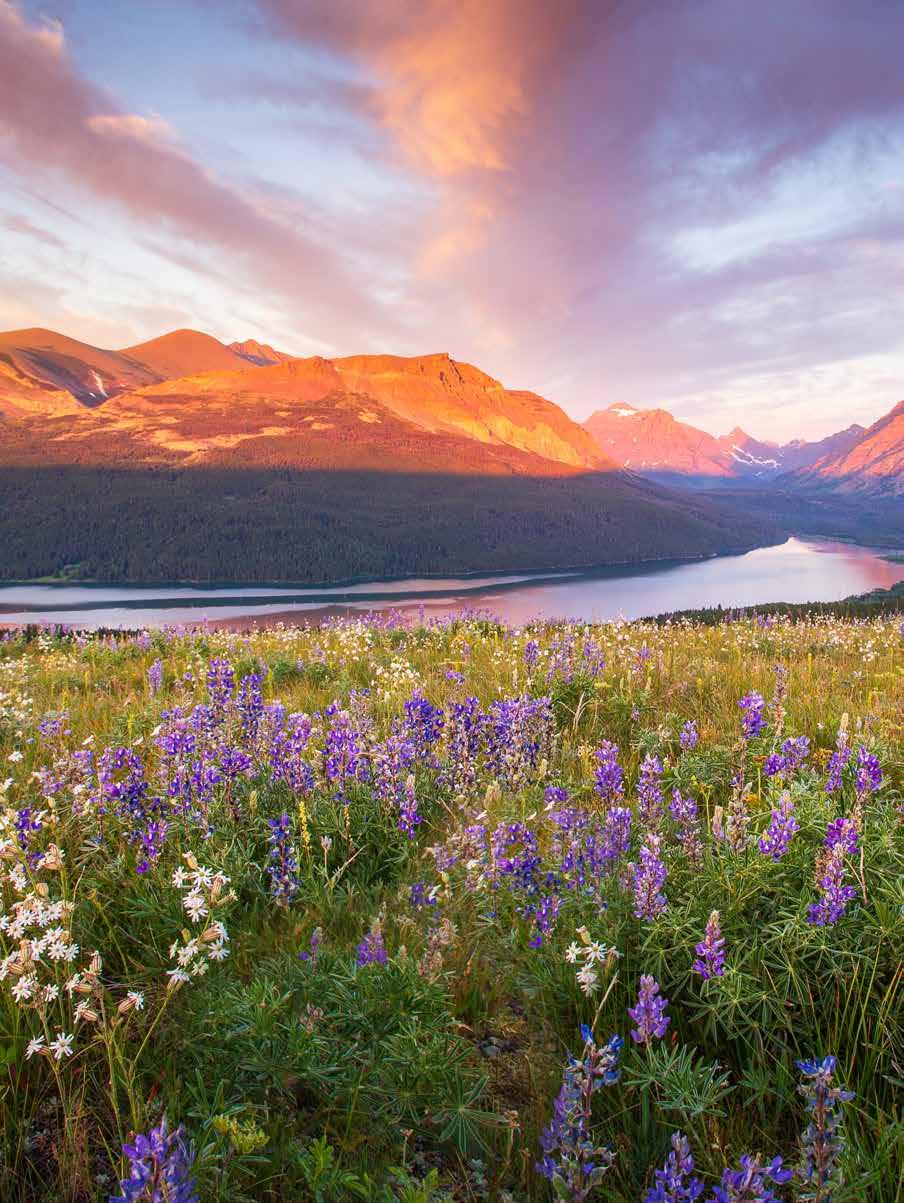




2025–2026
Published by the Blackfeet Nation
Copyright © the Blackfeet Nation. All rights reserved. No part of this book may be reproduced, distributed or transmitted in any form including posting to the internet, photocopying, or other electronic or mechanical methods, without the written permission of the publisher. Printed in the United States of America.
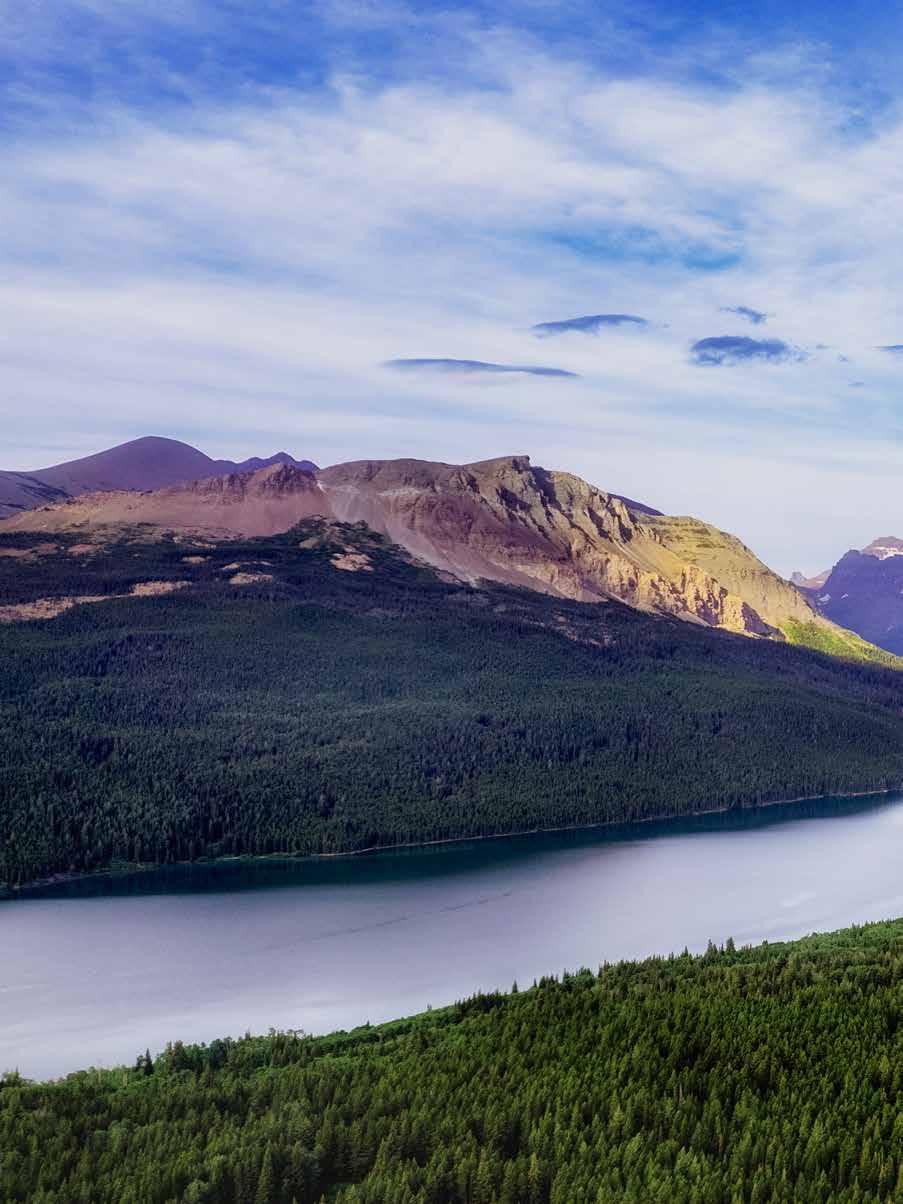
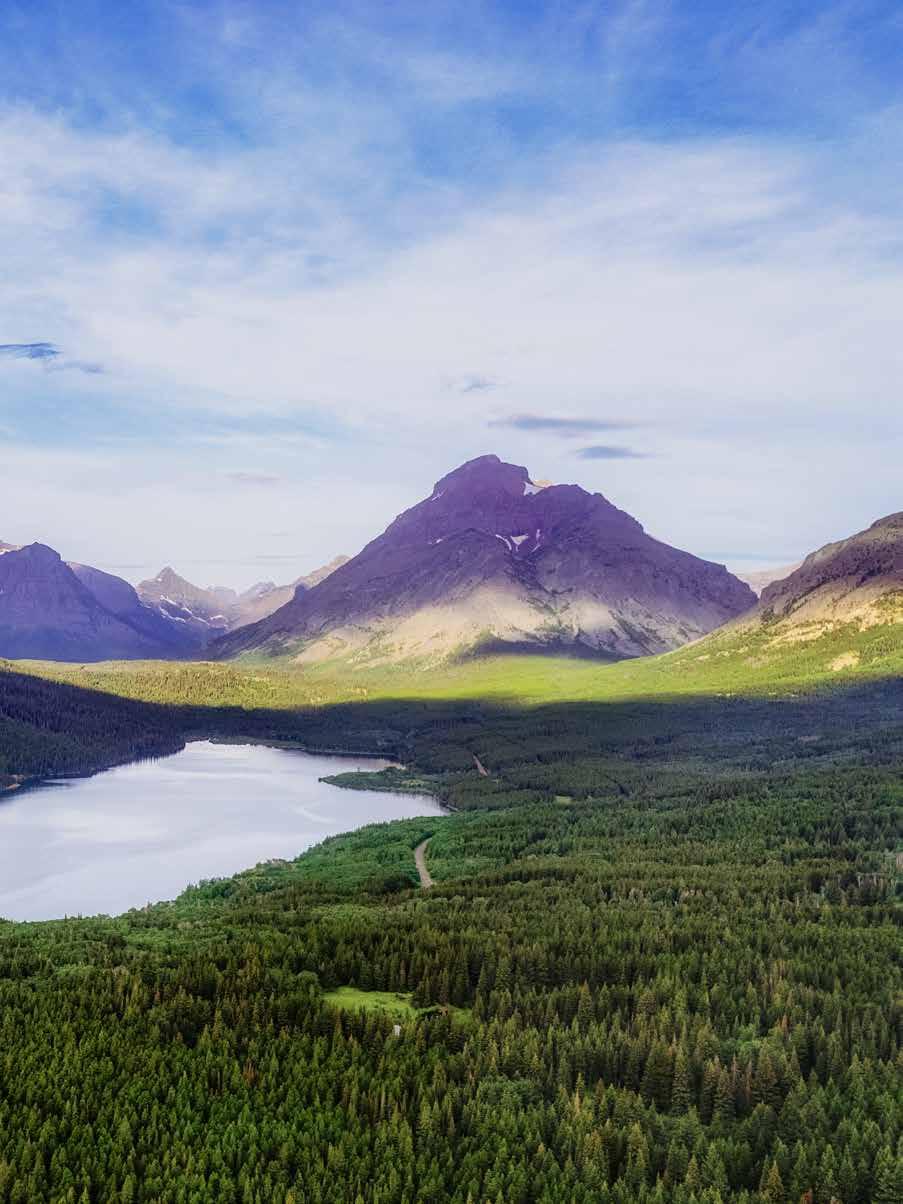
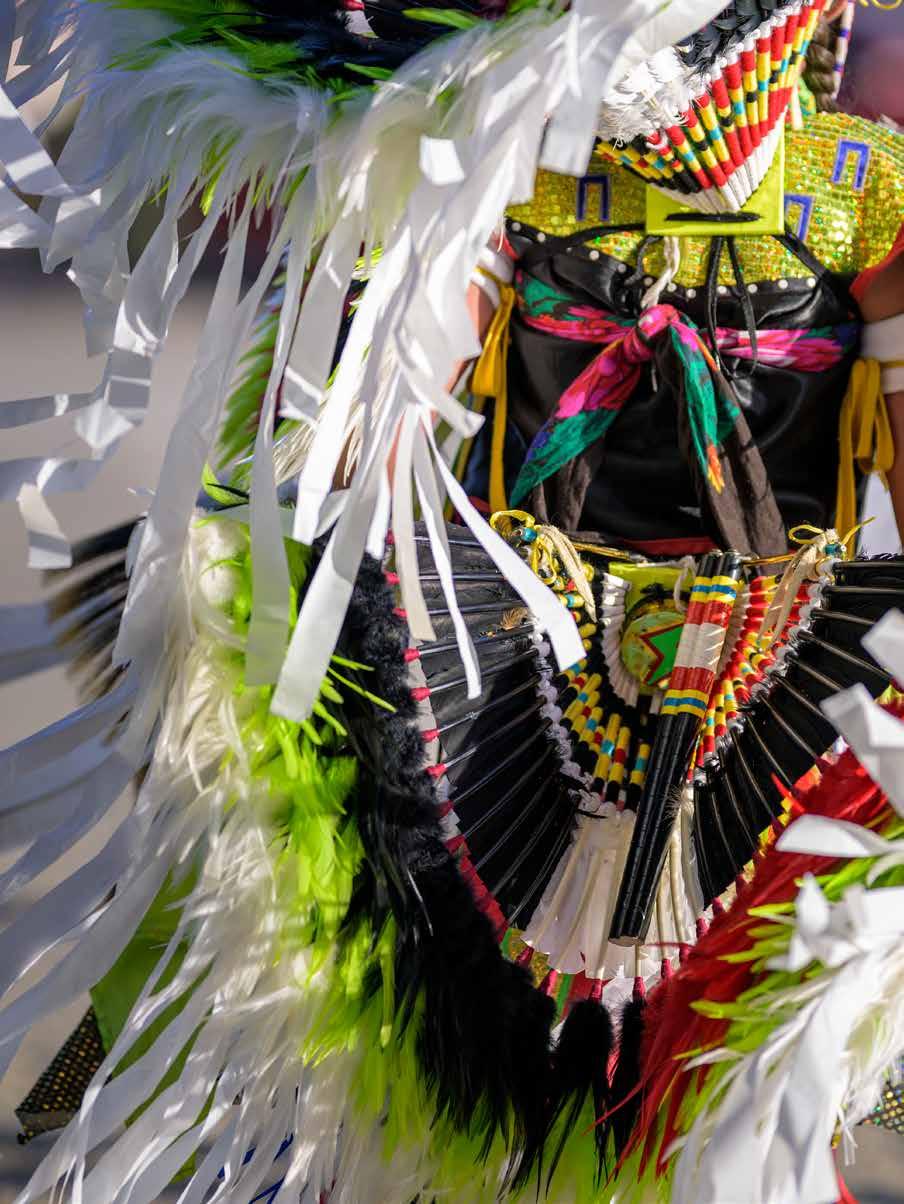

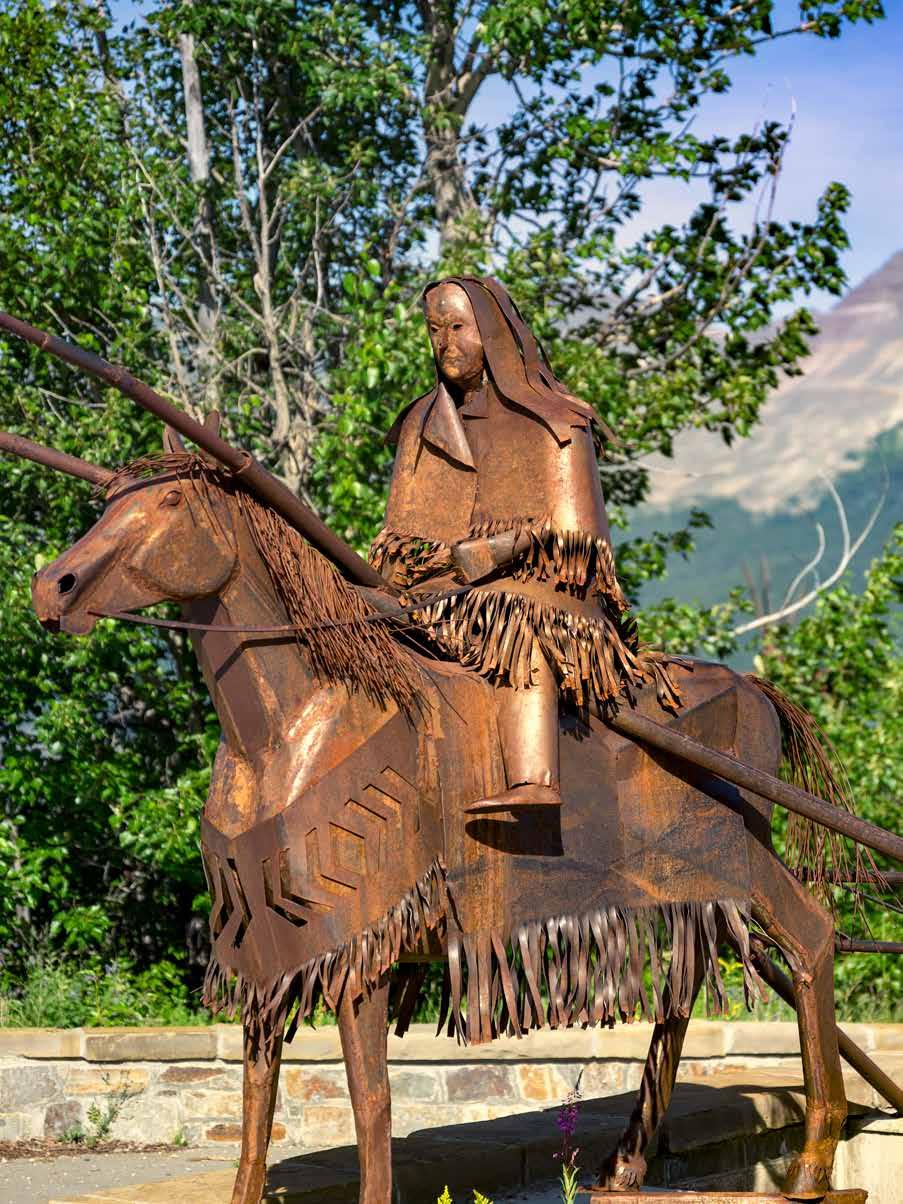
The Comprehensive Economic Development Strategy (CEDS) is a collaborative planning document designed to guide economic growth on the Blackfeet Reservation over the next 3-5 years The purpose of the CEDS is to prioritize economic development strategies that meet identified community needs, and to guide the development of a robust economic ecosystem that builds Tribal capacity and contributes to individual, system, and community success The CEDS provides a vehicle for individuals, organizations, Council and government divisions, educational institutions, and private industry to engage in meaningful conversations and create plans to best serve overall Tribal/ Reservation economic development
While the CEDS process often illuminates new ideas and strategies, this report also contains strategies, programs, and partnerships that already exist or have been implemented and exhibit some level of success The CEDS recognizes what is already working and continues to build on those efforts This allows the Blackfeet Tribe and their partners the opportunity to broaden successful programs and efforts, and to duplicate or expand programs and services that are meeting community needs The CEDS is also a tool for seeking additional funding resources that support the outlined goals and objectives
CEDS are required to be updated every five years to qualify for Economic Development
Administration (EDC) grant assistance The last Blackfeet Tribal CEDS was completed by the Tribal Planning Department in 2022 and has been the guiding economic development strategy since that time (2022-2025)
After initially meeting at the Native Nations Economic Development Conference in June of 2024, the Tribe procured the Center for Rural Outreach and Public Services Inc (CROPS) to assist in the updating of the 2022 CEDS The contract for that work was finalized in February of 2025, after which a series of process meetings were held with the Tribal Planning Department These meetings were followed by eight interviews with key community leaders and stakeholders in March and April of 2025 . Interviews were conducted with staff from planning, transit, revenue, human resources, the Tribal council, and with business leaders in the credit, educational, and hospitality industries A list of those individuals as well as the interview questions and the interview promotional flyer can be found in the Appendix
In addition to individual interviews, surveys were also distributed and collected This was completed by Planning Department staff between March and June of 2025
In August of 2025, a Native National Economic Strategies Retreat was held in Missoula, Montana This event brought together Tribal leadership as well as state and federal funding partners to identify Tribal, regional, and state level strengths and
While the CEDS process often illuminates new ideas and strategies, this report also contains strategies, programs, and partnerships that already exist or have been implemented and exhibit some level of success.
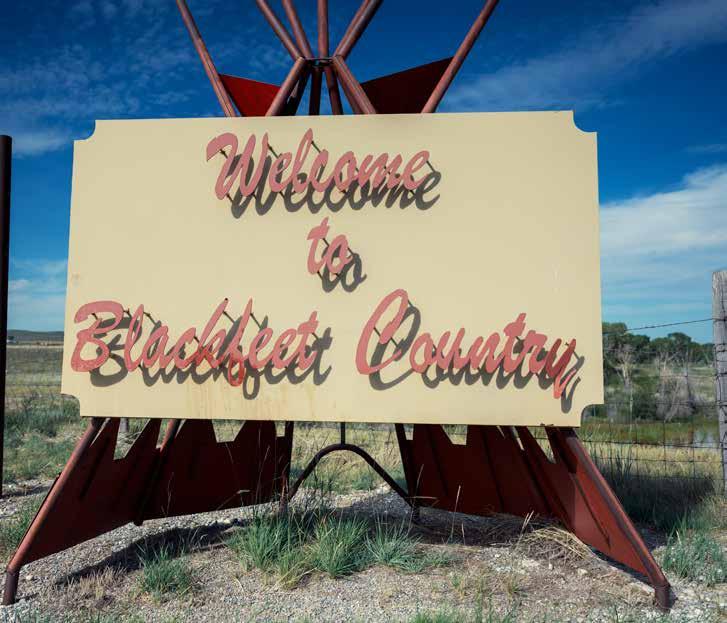
challenges, set strategic goals, and outline actionable steps to promote economic growth, job creation, and overall community development for the Blackfeet Tribe This retreat drew over 40 participants and was a critical part of determining economic development goals, objectives, and priorities
The invitational flyer and the attendance roster for this event are also in the Appendix
Following the August retreat, a draft CEDS was completed, published, and shared
broadly with the Council, community, and business leaders for their information and comments This ensured that the CEDS was representative of the community it is designed to serve and that there was significant opportunity for input and feedback prior to finalization
Public input and a review of strengths and challenges revealed significant concern related to workforce and housing Tribal leadership and businesses expressed challenges related to recruiting and retaining good workers More specifically, there are challenges in creating experiential learning (on-the-job) training opportunities and in finding/securing brick-and-mortar locations that support new business and entrepreneurial endeavors Many residents of the Blackfeet Reservation struggle with the generational trauma and the related disenfranchisement common to Native Americans Poverty and unemployment rates are high, and opportunity is low . This requires innovative solutions that include better and easier access to education, onthe-job training opportunities, capital that meets the needs of start-up businesses, and both internal and external partnerships that support long-term business and economic growth This also requires close attention to economic development through the eyes of overall community health Several of the “weaknesses” as identified include lack of infrastructure/ facilities to support Tribal elders as well as youth and overall community health
Although most areas of Montana, including the Blackfeet Reservation, did not experience many of the debilitating economic impacts of COVID-19, as did many urban areas, there have been significant and ongoing impacts Native Americans experienced substantially greater rates of COVID-19 mortality compared to other racial and ethnic groups due to high rates of poverty, crowded living conditions, and limited
access to high-quality medical facilities (Riis L Williams, Princeton University, December 2021) Businesses experienced pandemic impacts as well, experiencing decreased sales and supply-chain issues
When the Tribe completed the update of their CEDS in 2022, it was noted that “when businesses were asked if they closed their business temporarily, reduced services/ capacity, or shortened their operating hours during that time, 81% reported they did ” Some of these businesses closed permanently as a result Repercussions from the pandemic renewed the understanding and need to evaluate economic strategies and identify ways in which communities, especially those that are very rural and isolated, can be more resilient
Poverty and unemployment rates are high, and opportunity is low…
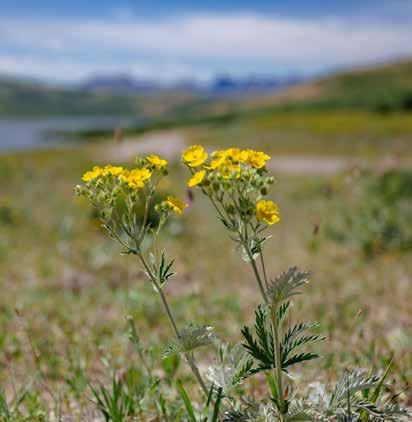
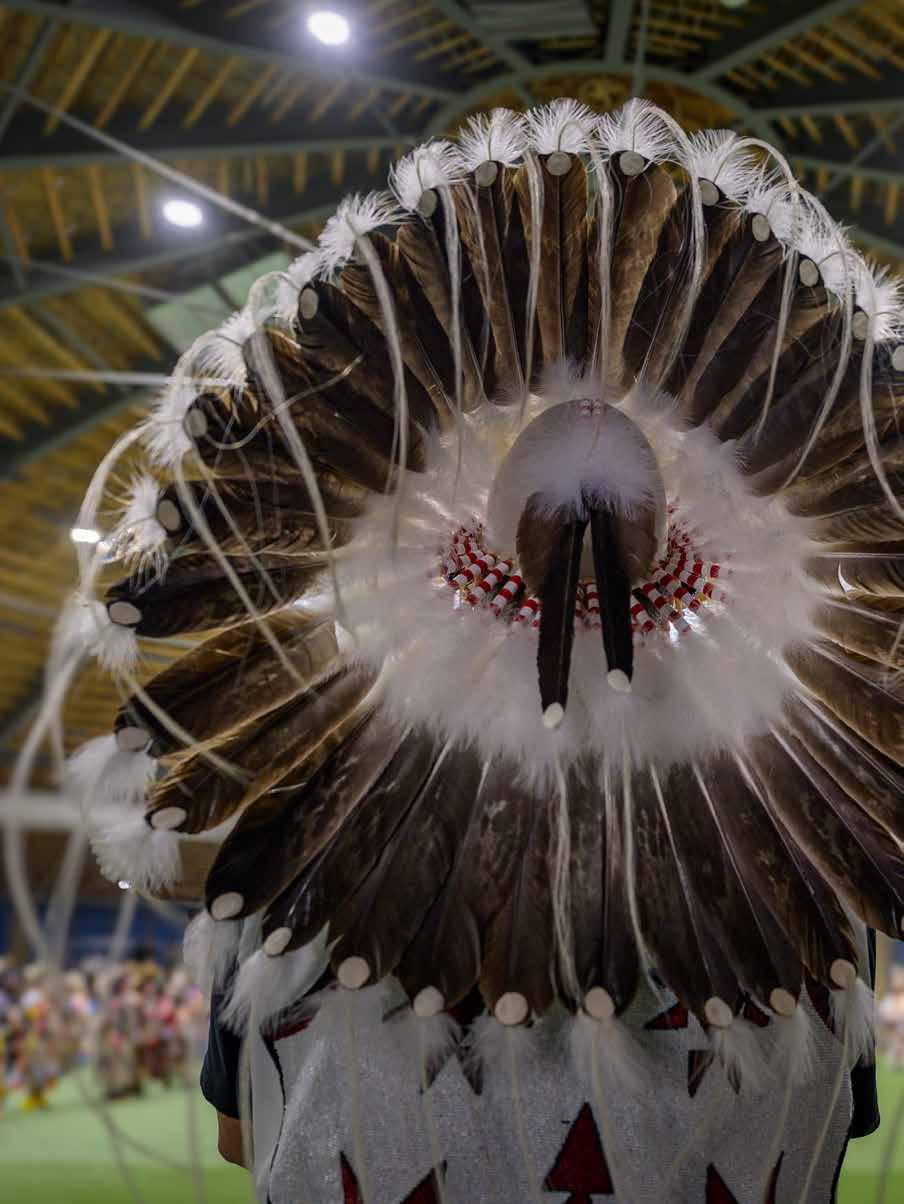

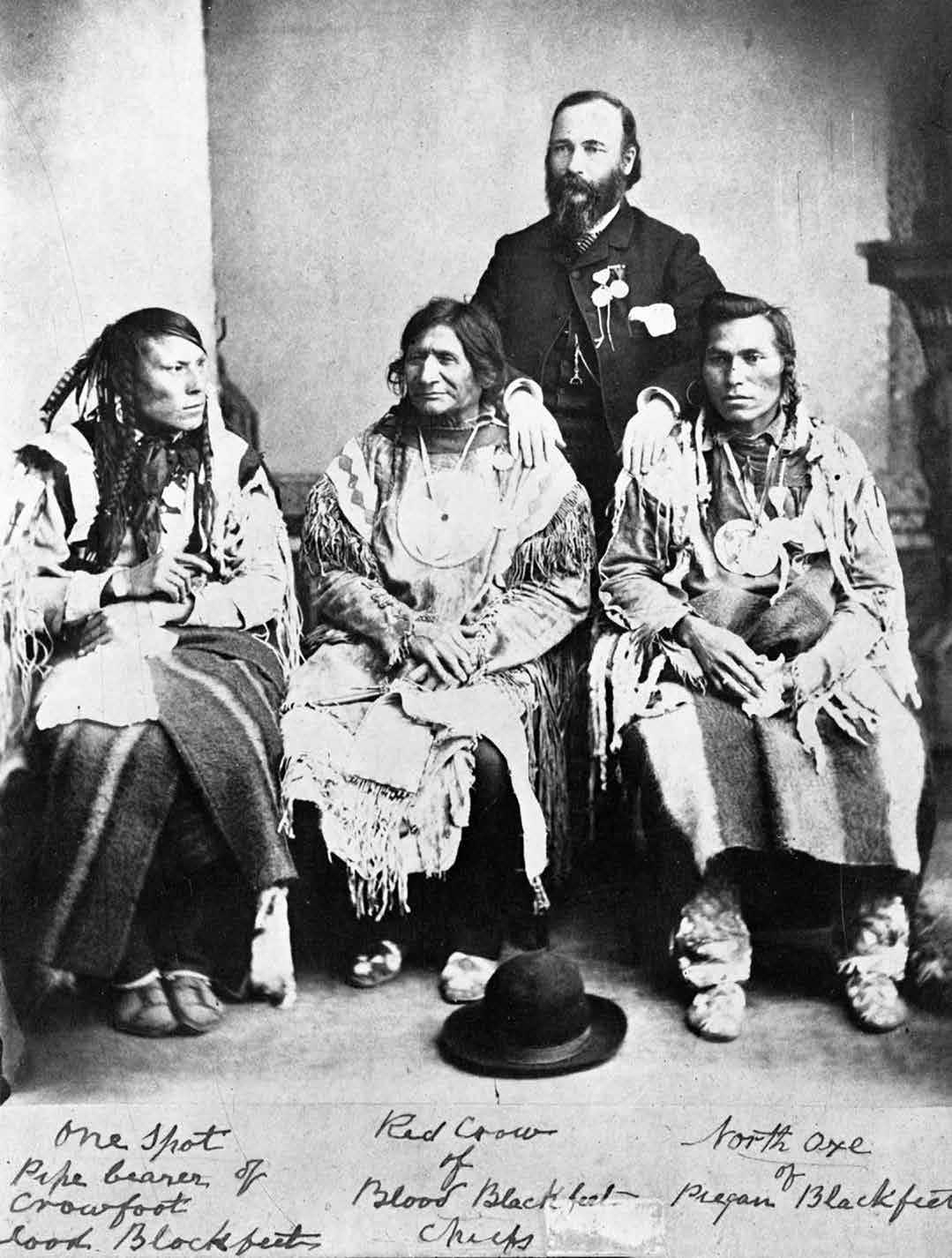
The present-day Blackfeet are descended from the southern Piikani (or Piegan) Tribe, which is part of the confederacy of tribes collectively known as the Blackfoot Confederacy The other bands of the Confederacy are the Blackfoot (Siksika), Blood (Kainai), and northern Piikani, who all share a common language (part of the Algonquin language family), and shared territory prior to the westward expansion of white settlers
Due to a combination of geographic remoteness and the Blackfoot Confederacy’s military prowess, the Blackfeet encountered white settlers later than many other tribes It was not until the first half of the 19th century that traders arrived, introducing products that have had negative and long-lasting impacts, such as alcohol and sugar, as well as diseases that the Blackfeet were unable to combat
In 1851, without consultation or representation from the Blackfoot Confederacy, the United States government signed the Fort Laramie Treaty, which set aside a large area for the Blackfeet In 1865 and 1868, new treaties were signed which were negotiated for the Blackfoot lands south of the Missouri River These were never ratified by Congress In 1873 and 1874, the southern boundary of the reservation was moved 200 miles north by presidential order and congressional acts The site of the Blackfeet Indian Agency moved from what is now known as the town of Choteau, to an area along Highway 89 on Badger Creek known as Old Agency These 200 miles of land were then opened to settlement During the winters of 1883 and 1884, the
Blackfeet experienced several unsuccessful buffalo hunts As the buffalo population declined, the Blackfeet faced starvation and were forced to accept reservation living and dependence upon rations for survival These times are known as the “Starvation Winters ”
An 1888 agreement ceded additional lands back to the government from the Blackfeet, Fort Belknap, and Fort Peck Indian Reservations
In 1896, an agreement was made between the government and the Blackfeet As part of that agreement, the government asked for the sale of the Rocky Mountains, which bordered the reservation to the west and were believed to contain valuable minerals and metals A commission was sent to negotiate with the Blackfeet . Disagreements ensued over the quantity of land and the amount of money, the result of which was cessation of lands that now make up Glacier National Park, Lewis and Clark National Forest, and the infamous “Ceded Strip ”
Today, the legitimacy of this agreement, the proper boundaries, and the amount of money that should have been paid are all still in dispute The Blackfeet Tribe still holds some rights in Glacier National Park and the Lewis and Clark National Forest for hunting, fishing, and wood This series of events resulted in deeply engrained generational trauma and a significant distrust of the government This has, to varying degrees, continued, impacting how the Tribe approaches agreements, grants, and other inter-governmental opportunities
Due to a combination of geographic remoteness and the Blackfoot Confederacy’s military prowess, the Blackfeet encountered white settlers later than many other tribes.
The Blackfeet Tribe of the Blackfeet Indian Reservation is a federally recognized sovereign tribal nation The Tribe has more than 17,000 enrolled members, making it one of the largest tribal nations in the United States; over half of members reside on the Blackfeet Reservation Pursuant to Section 16 of the Indian Reorganization Act of 1934 and amendments, the Tribe has sovereign governmental control over its land and resources
The Tribe is governed by the Blackfeet Tribal Business Council, a body of nine elected
officials which is organized to represent, develop, protect, and advance the views, interests, and resources of the Blackfeet Tribe . The Blackfeet Constitution and ByLaws empower the Council to negotiate with federal, state, and local governments and manage all economic affairs A corporate charter was also adopted to further economic development, conferring upon the Tribe certain corporate rights, powers, privileges, and immunities under the corporate name “The Blackfeet Tribe of the Blackfeet Indian Reservation ” The Council currently consists of the following members:

Chairman Gervais is 47 years old, married to wife Debbie, and has 8 children
He is a third generation elected Tribal leader His father and grandfather before him, have also served on the Blackfeet Tribal Business Council and have been active leaders, as is Chairman Gervais
He has dedicated his life to help our Blackfeet people and is very passionate about social issues and recovery from addiction .
He emphatically promotes sobriety, wellness, and healing and is very involved in helping individuals seek and complete treatment and recovery .
Chairman Gervais promotes mental health and wellbeing of all our Amskapi Pikuni people . Chairman Gervais also served as Council Member from 2018-2022 .
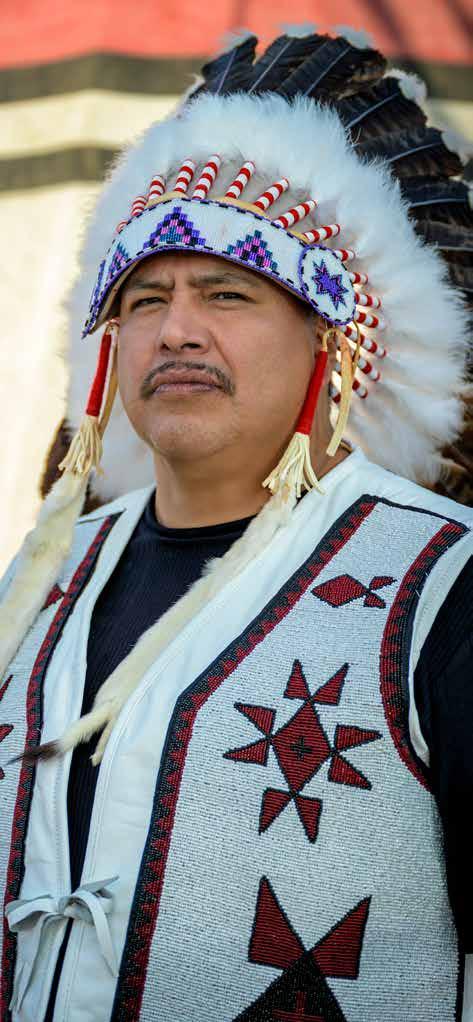
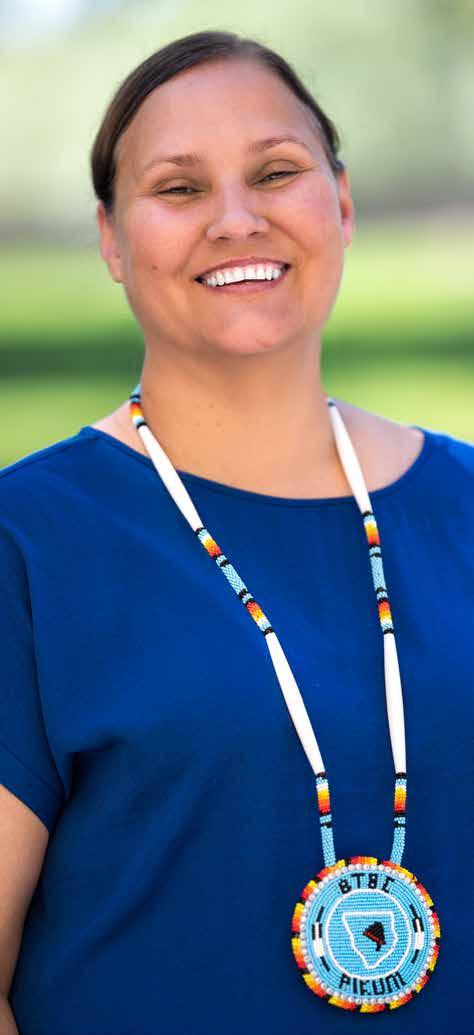
Shelly Hall serves as the Vice Chair of the Blackfeet Tribal Business Council, a position that marks a significant milestone in the Tribe’s history
As Vice Chair, Shelly plays a crucial role in overseeing various services provided by the Tribe, including courts, child welfare, employment assistance, wildlife management, health care, education, land management, and senior services Shelly’s leadership and dedication to the Blackfeet Nation have been instrumental in driving initiatives that benefit the community
Her commitment to the Tribe’s welfare and development is evident in her efforts to enhance the quality of life for all Tribal members Shelly’s work is characterized by a deep understanding of the Tribe’s needs and a strong vision for its future .
In addition to her role on the council, Shelly is known for her advocacy and community involvement She continues to be a driving force in promoting the interests of the Blackfeet Nation and ensuring that the Tribe’s voice is heard at all levels of government
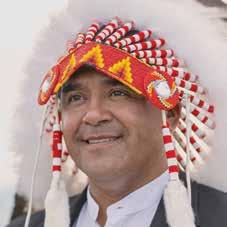


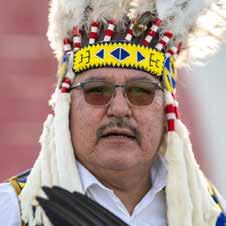

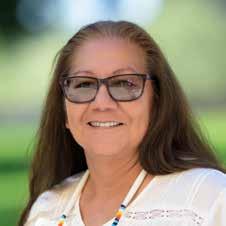
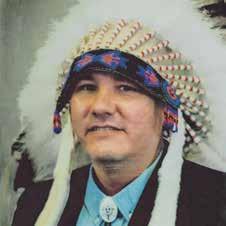

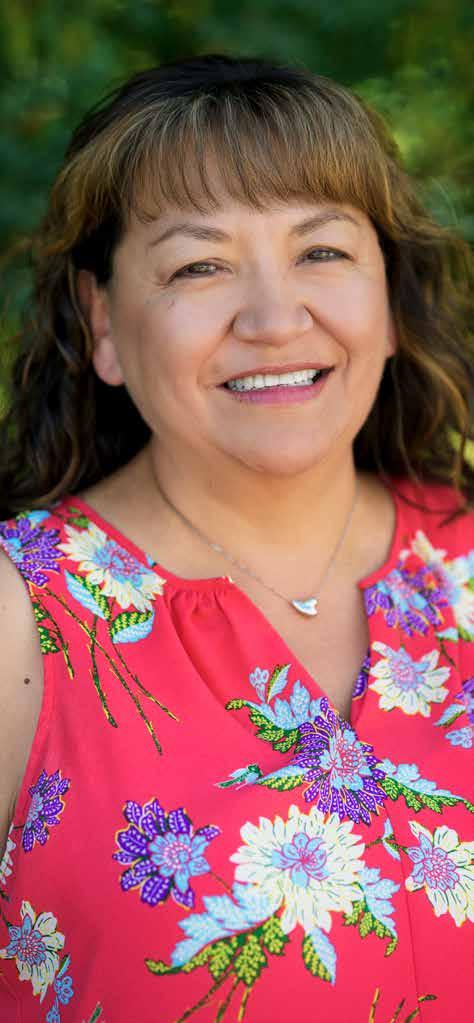
Paulette Butterfly is an enrolled member of the Blackfeet Tribe, Browning, Montana Before being hired as the Planning Administrator for economic development, Paulette was a mental health therapist for government, profit, and non-profit entities
She served as a Community Mental Health Director, Care Center Administrator overseeing daily operations, as well as grant writer and planner
Paulette leads the economic development projects for the Blackfeet Tribe, developing the current program workforce and creating short- and long-range plans for economic development opportunities and tourism, while integrating cultural and traditional values into all projects
Paulette earned a master’s degree in social work from Walla Walla College and a bachelor of science degree in social work from the University of Montana
Mitzi Racine has dedicated more than 19 years to supporting tribes, non-profits, and small businesses across Indian country and throughout the United States She has worked extensively in grant writing, program development, strategic planning, and administration, helping communities secure critical funding and build long-term capacity Mitzi has served as a grant writer, project manager, and contracts manager, with a strong record of advancing intergovernmental partnerships and community-based initiatives
Her professional focus centers on cultural preservation, economic growth, and strengthening essential services for tribal nations and rural communities She brings expertise in federal, state, and foundation grant programs, with a reputation for fostering collaboration and sustainability in every project she supports Mitzi holds a doctorate, master’s, and bachelor’s degree in business administration She is also the proud mother of two daughters, both enrolled members of the Blackfeet Tribe

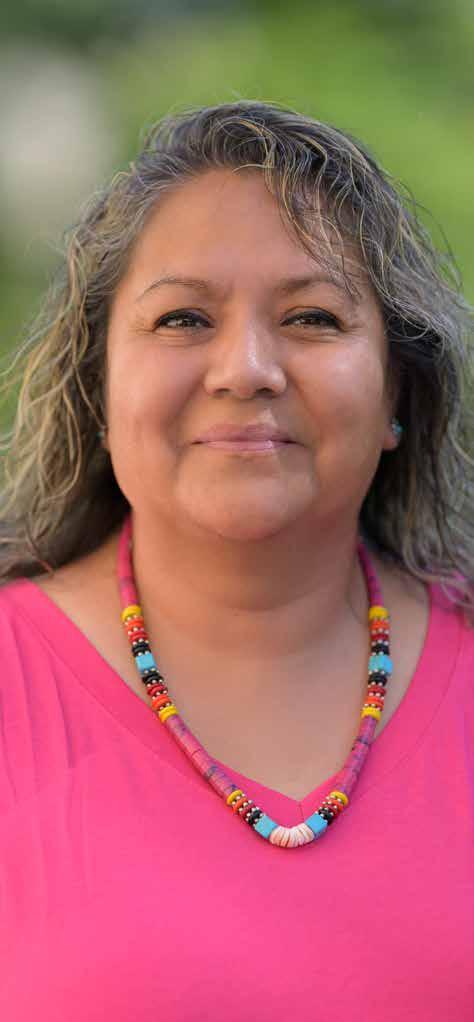
Compliance Specialist, Grant Writer Assistant and Planner
Venissa Guardipee is an enrolled Blackfeet Tribal member as well as a Navajo descendant
She has lived on the Blackfeet Reservation her entire life Graduating from Valier High School in 1992, Venissa went on to attend Blackfeet Community College in Browning, Montana and earned an associate’s of arts degree in secretarial studies
Venissa started working for the Blackfeet Tribe in May of 1997 and has been actively employed with the Tribe for 28 years, with 17 years in the Planning/Economic Department
Venissa has served as a committee member for the annual Heart Butte Indian Days Celebration for many years
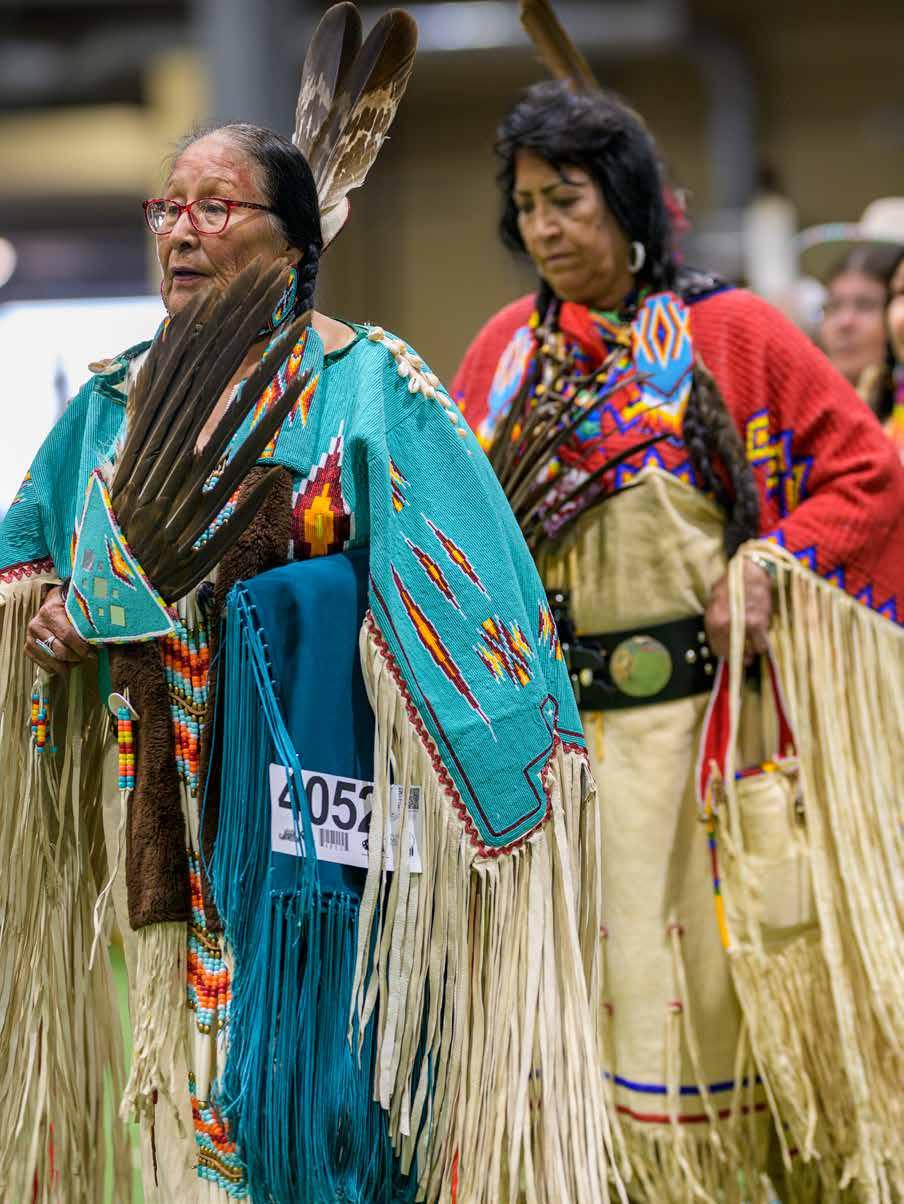

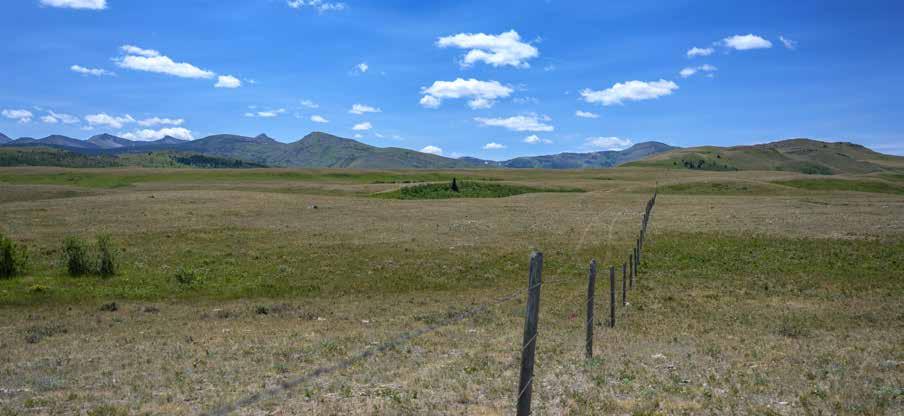
The Blackfeet Indian Reservation makes up over 1 5 million acres of land in northwestern Montana Of that, 30% (452,729 acres) are individually allotted lands, 33% (508,644 acres) are tribally owned lands, and 37% (564,339 acres) are fee title or state lands The Reservation is mostly in Glacier County, but a small portion is in Pondera County The Canadian border is to the north, and Glacier National Park to the west
The topography is mostly high plains characterized by grasslands, but rises into the coniferous forests of the Rocky Mountains along the western extent, with a maximum elevation of 9,085 feet at Chief Mountain Given the minimum elevation of 3,400 feet, the Reservation contains significant topographical variation The reservation contains over 518 miles of streams and 180 bodies of water, including eight large lakes
Due to the elevation changes, there are a variety of climate types The largest community of Browning, pop . 1,018, is located within a warm-summer humid continental climate, characterized by large temperature swings, cold winters, and relatively low precipitation . Precipitation rates increase as the county moves from east to west and elevations increase: the eastern part of the county has a cold semi-arid climate, whereas the highest-elevation areas in the western part of the county begin to approach a subarctic climate, characterized by colder temperatures and heavier snowfall
The Reservation is located approximately equidistant from three larger cities Great Falls, pop . 60,000, is located about 125 miles or a two-hour drive to the southeast Kalispell, pop . 25,000, is slightly closer, located approximately 100 miles west; however, this is over a mountain pass and as a result takes approximately the same amount of time to drive, as well as introducing additional winter weather hazards Both cities contain airports with year-round service to various locations across the country Finally, the city of Lethbridge, Alberta, pop 100,000, is located less than 100 miles north and is less than a two-hour drive, making it the closest major city It is, however, across an international border in Canada Lethbridge’s airport only serves the city of Calgary
The Reservation is served by two major highways, U S Routes 2 and 89, both of which converge in Browning There are two Amtrak stations on the Reservation, both of which are served by the Empire Builder train running between Chicago and Seattle/Portland One of those stations is in Browning, while the other is in East Glacier Park Village
The Blackfeet Reservation is the third largest reservation in Montana encompassing approximately 1.5 million acres.

The Reservation is home to 56% of the enrolled Tribal Members and is the largest Indian population in Montana.
According to the 2020 census, the Blackfeet Indian Reservation has a population of 10,764 This includes off-reservation trust lands (This applies to all demographic information throughout this section ) The population of the reservation grew by approximately 350, or 3 5%, between 2010 and 2020, but the most recent census estimates indicate that between 2020 and 2023 the population declined by about 450 to 10,309 This contrasts with the state of Montana, which grew rapidly – almost 10% during the 2010s – and continues to grow in the 2020s at a rate that outpaces the United States as a whole
The state of Montana is considered very rural, with a population density of only 7 to
7 8 people per square mile The Blackfeet Reservation is even more rural than the state average, with an estimated population of 3 47 people per square mile There are five primary communities within the reservation, none of which are currently incorporated: Browning (pop 1,018), Heart Butte (pop 621), Babb (pop 130), East Glacier Park Village (pop 354) and St Mary (pop 54)
It should be noted that accurate population and household demographics for Blackfeet Nation and most sovereign tribal lands are difficult to estimate accurately . There are a variety of reasons, for this related to inconsistent and varied data sources, including inaccurate census data
The population on the Reservation is relatively young, with a median age of just 30 4 according to 2023 estimates, in comparison to 38 7 for the United States and almost a full ten years younger than the Montana median of 40 2 Almost onethird of residents are under the age of 18 (31 8%), a much higher proportion than Montana, at 21 3% Residents are also much less likely to be elderly, with just 10 8% of Reservation residents being over the age of 65, compared with 19 7% of Montanans
Due to the number of children living on the Reservation, and despite the relative lack of elderly people, the Reservation has a somewhat higher age-dependency ratio than Montana or the United States as a whole, with about 74 4 people not of working age for every 100 people
of working age (working age is defined as 15 to 64) Montana has 69 4 such people, with a more balanced ratio between children and elderly people
Moreover, a somewhat higher proportion of Reservation residents have a disability, at 16 3%, compared to 14 3% of Montanans This is despite the lower median age
This difference is driven by the disability rate among males, at over 20%, compared to 12 7% for females, which is below the proportion for Montana or the United States as a whole The ratio of men to women residents is also more heavily weighted toward woman than the overall state of Montana, with approximately 92 9 males for every female on the reservation, as compared to 102 8 males per female in Montana
The population on the Reservation is relatively young, with a median age of just 30.4, in comparison to 38.7 for the U.S.
Source: www.citypopulation.de/en/usa/aia/admin/blackfeet/aia0305R__blackfeet
As of 2023, self-reported members of the Blackfeet Tribe make up about three-quarters (75 .4%) of the population of the Reservation . A further 10 8% are White and 9 5% are American Indian or Alaska Native who did not identify as members of the Blackfeet Tribe The remaining less than 5% of the population is largely composed of multiracial people, especially people who identify as both White and American Indian Just 1 7% of the population identified as Hispanic or Latino (compared to 4 4% of Montanans)
Only 55 residents of the Reservation, or 0 5% of the population, are estimated to have been born outside the United States A total of 86 5% of residents were born in Montana, compared to just 52 5% of Montana residents overall
The town of Browning is the economic hub of the Reservation Employment, Tribal government offices, schools, essential services, and amenities are primarily centered there, creating service and business “deserts” in the other smaller communities The Blackfeet Reservation struggles with poverty The median household income on the Reservation is estimated at $39,583, which is only 57% of Montana’s median household income of $69,922, and barely half of the U S median of $78,538 About one-third of the Reservation’s residents are estimated to be living under the poverty line That is starkly more than Montana’s poverty rate of 12% This includes 35 8% of children under 18 and 24 7% of adults aged 65 and older
Housing on the Reservation is subject to overcrowding The average household size on the reservation is 3 04 people for owner-occupied units, which make up 60% of the county, and 3 59 people in renter-occupied units, which make up the other 40% The average household size for owner-occupied units is 23% higher than the Montana average, and the rate for renter-occupied units is 68% higher Moreover, over 10% of housing units contain more than one resident per room, compared to less than 2% statewide
Additionally, housing stock is older, in poor condition, and sometimes unsafe According
BLACKFEET NATION SUBSTANDARD HOUSING
to the National American Indian Housing Council, 40% of on-reservation housing in the U S is considered substandard, compared to 6% of U S housing The Blackfeet Housing Authority has doubled efforts to improve conditions for residents who rely on tribally owned housing, including building and/or rehabilitating homes Even so, the housing shortage and the condition of homes remains a critical issue That said, the Reservation does have a lower housing cost burden than Montana as a whole Only 34 6% of households that rent spend more than 30% of their income on rent, compared to 45 4% across Montana
The housing shortage and the condition of homes remains a critical issue.
UNITED STATES SUBSTANDARD HOUSING
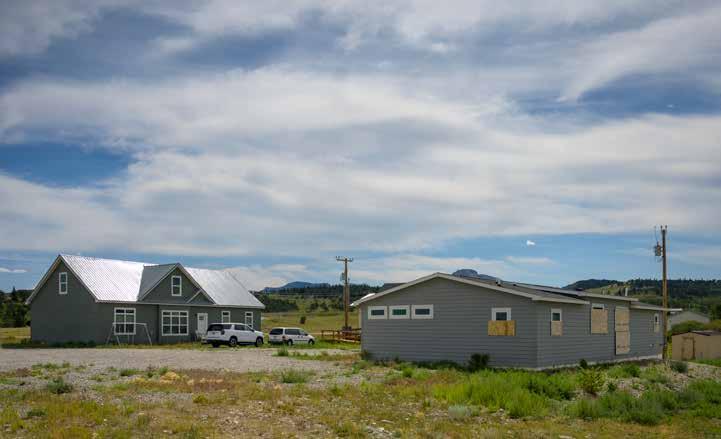
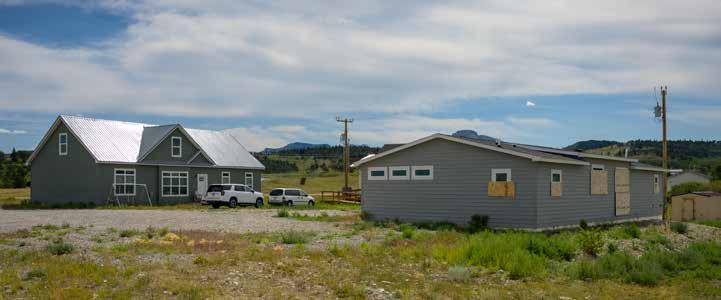
Some 6 3% of households in Glacier County and nearly 10% of households on the reservation have no vehicle available
About 81% of workers commute by car, a rate like Montana as a whole, but commuters on the Reservation are more likely to carpool rather than drive alone
Most of the remainder work from home, and 4 6% walk The Tribe also operates a public transit service, open to the public This is primarily utilized by those residents who are elderly, disabled, or community college students . The service is free to those riders who are elderly or handicapped
There is a nominal fee for other riders .
According to the USDOT Transportation Community Explorer, 98% of individuals
living in even the largest community of Browning are experiencing transportation insecurity This includes 98% experiencing issues with transportation access, 95% experiencing transportation cost burden, and 52% experiencing transportation safety deficits
Roadways on the Reservation are also heavily utilized by tourists Glacier National Park consistently hosts around 3 million visitors annually In 2022, an estimated 568,404 of those visitors entered the Park through the Two Medicine or St Mary entrance, directly through Browning, contributing to the deterioration of roads throughout the reservation
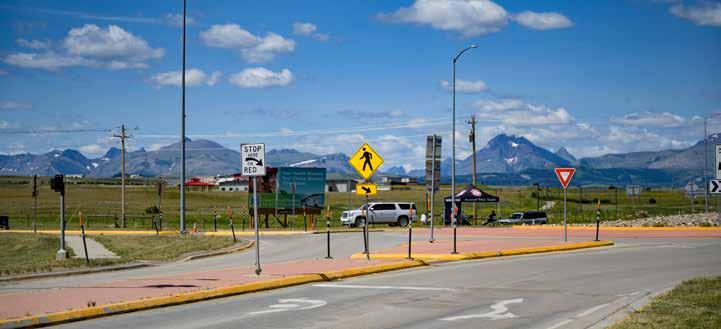
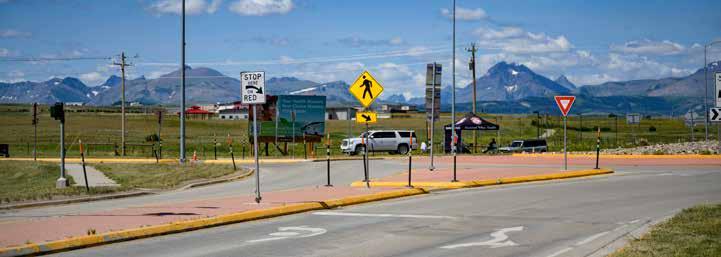
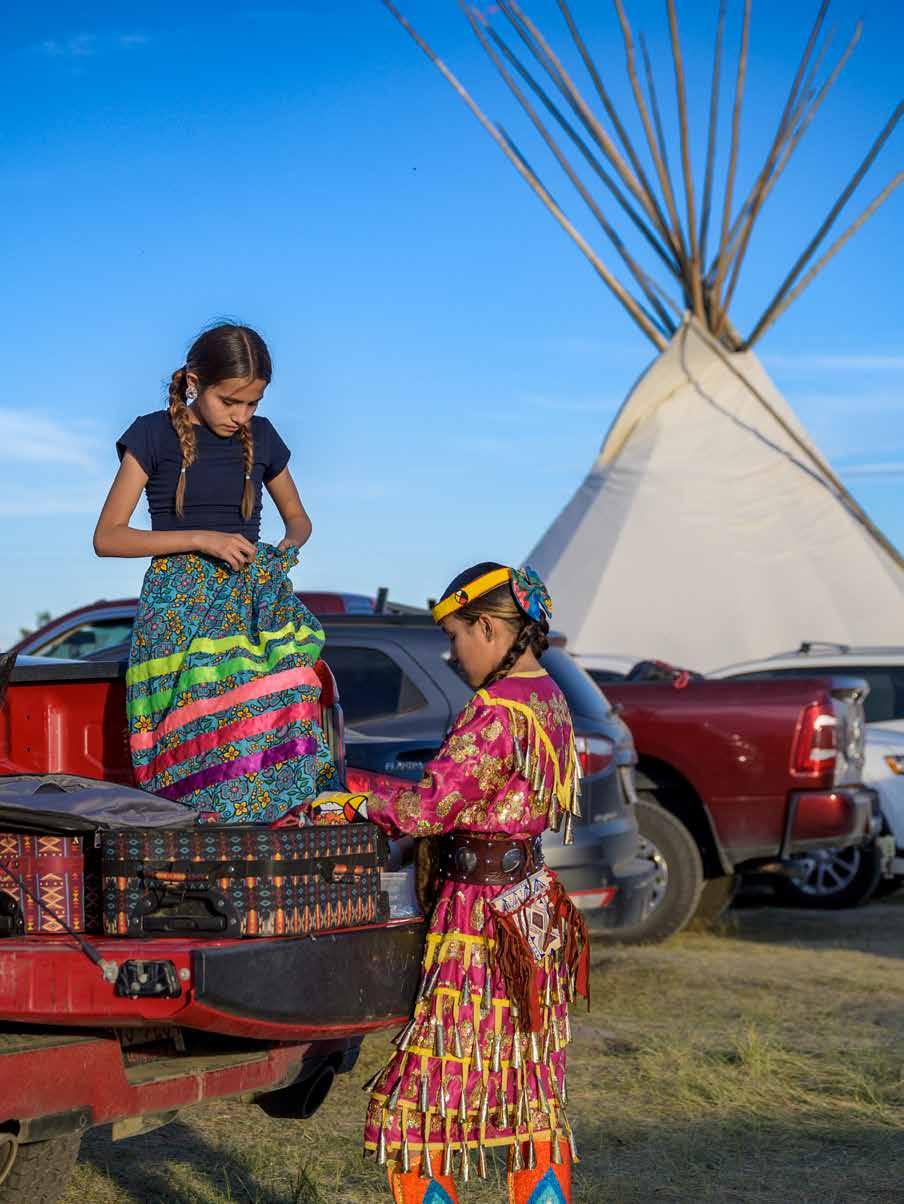
The workforce on the Reservation has a disproportionately low level of educational attainment.
The Reservation is a net receiver of workers As of 2022, 964 people commute into the Reservation boundaries but live outside it, whereas only 472 live within the Reservation boundaries but commute outside it In addition, 1,594 people both live and work within the Reservation .
The workforce on the Reservation has a disproportionately low level of educational attainment . Over 13% of adults 25 and older lack a high school degree, which is more than double Montana’s rate of 5 .4% . In addition, the 17 8% of adults who hold a bachelor’s degree or higher is only about half the Montana-wide rate of 34 5%
The Reservation has a much higher unemployment rate than the rest of
Montana, at 12 2% compared to just 3 8% statewide (more than three times as high) Moreover, a smaller proportion of residents are within the labor force, placing a higher economic burden on those residents . In total, 3,687 or just under half of all residents of the Blackfeet Reservation aged 16 and older were estimated to be employed in 2023, compared to 60% statewide Of these 3,687 employed people, about half were employed in government and about half were either in private industry, selfemployed, or unpaid family workers This is in stark contrast to Montana overall, in which only 16 7% of workers are employed by the government Workers on the Reservation are disproportionately likely to work in service occupations
Industries on the Reservation can be thought of in two ways: industries that employ Reservation residents and industries that are located on the Reservation, which may employ people who live off the Reservation
Among Reservation residents, educational services, healthcare, and social assistance form the largest employment industries at over 30% of the total workforce This is also the largest industry in Montana and the United States as a whole, but it is not as dominant statewide, at 23 .3% of employment In addition, public administration employs three times as
many residents on the Reservation as in the state, at 16 8% compared to just 5 6% Other disproportionately well-represented industries on the Reservation include agriculture, forestry, fishing and hunting, and mining, and arts, entertainment, recreation, accommodation, and food
Compared to Montana, Reservation residents are significantly less likely to be employed in wholesale trade, transportation, warehousing and utilities, manufacturing, or construction
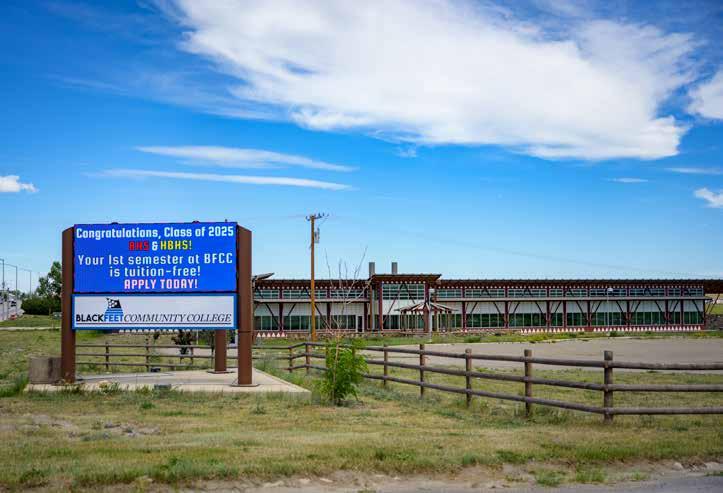
BLACKFEET RESERVATION LARGEST EMPLOYMENT INDUSTRIES
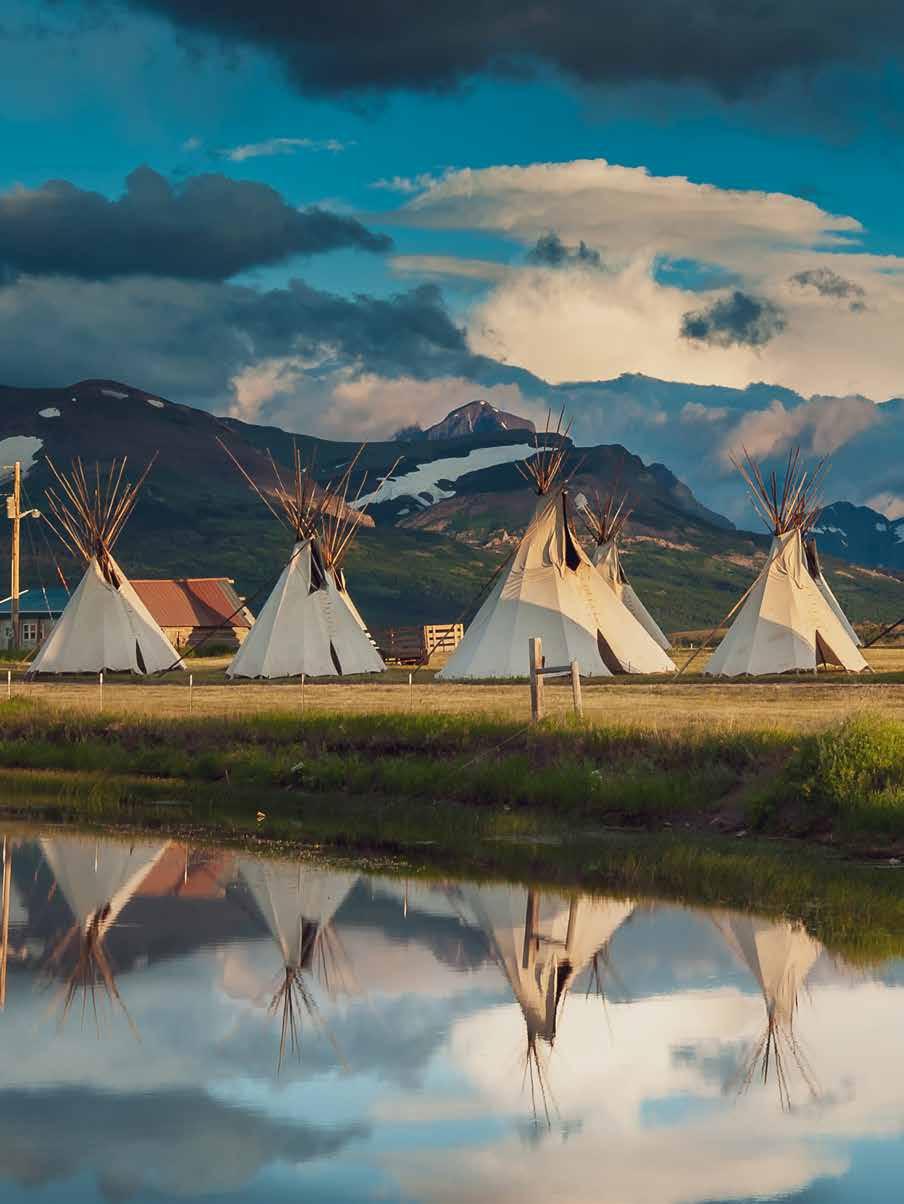

In August of 2025, a retreat with more than 40 participants was held in Missoula, Montana. The retreat was a critical part of determining objectives and priorities.
Public outreach began in March of 2025 and included a community survey as well as eight individual interviews with identified key community leaders and stakeholders in March and April of 2025
Interviews were conducted with staff from planning, transit, human resources, Council, and with business leaders in the credit, educational, and hospitality industries . A list of those individuals as well as the interview questions and promotional flyer can be found in the Appendix In addition to individual interviews, between March and June of 2025, Planning Department staff distributed and collected community surveys Surveys were solicited from Tribal department staff, business owners, employees, students, and residents A copy of the survey can be found in the Appendix
In August of 2025, a retreat was held in Missoula, Montana This event brought together Tribal leadership as well as state and federal funding partners to build on previous public comment and to identify tribal, regional and state level strengths and challenges, set strategic goals, and outline actionable steps to promote economic growth, job creation, and overall community development for the Blackfeet Tribe . This retreat drew over 40 participants and was a critical part of determining economic development goals, objectives, and priorities The invitational flyer and attendee list for this event are also in the Appendix
Following the August retreat, a draft CEDS was completed, published, and shared
broadly with Council, community, and business leaders This ensured that the CEDS was representative of the community it is designed to serve and that there was significant opportunity for input and feedback prior to finalization
Among the primary strengths and assets identified were a strong and enduring sense of culture and heritage, a strong presence of young people in leadership (Council), abundant undeveloped land, a thriving community college, and successful gaming/hospitality facilities operated by Siyeh
The most frequently identified challenges included remote/ rural location, lack of infrastructure to support growth (buildings that can house businesses, as well as transportation and housing infrastructure), lack of communication between Tribal divisions/departments, lack of experiential learning opportunities, and deficits in policy and procedure . Perhaps most prevalent were challenges identified that are directly related to the impacts of generational trauma These included lack of long-term and effective supports for issues such as mental health, substance addiction, and poverty, which significantly impact recruitment and retention of workforce, development of new business endeavors, and the ability to create a true vision for the Tribe
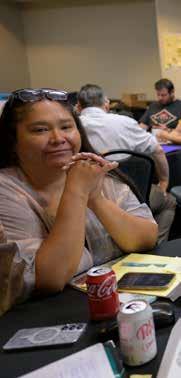
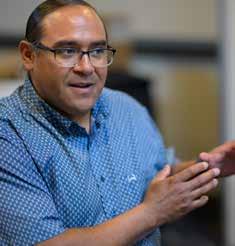
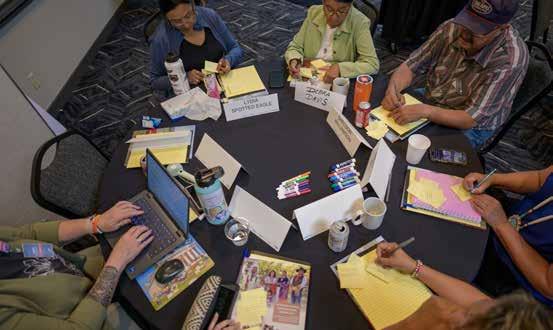
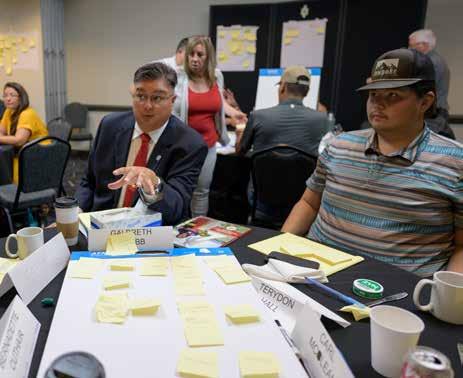

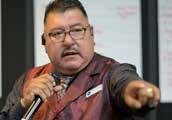
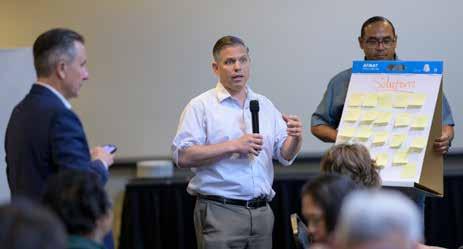

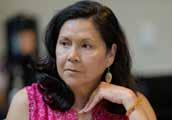
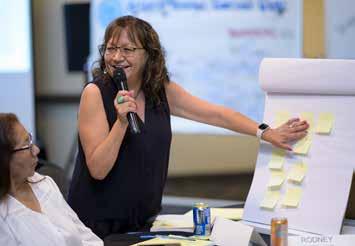
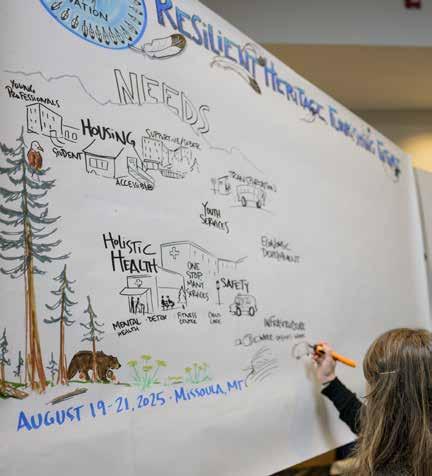
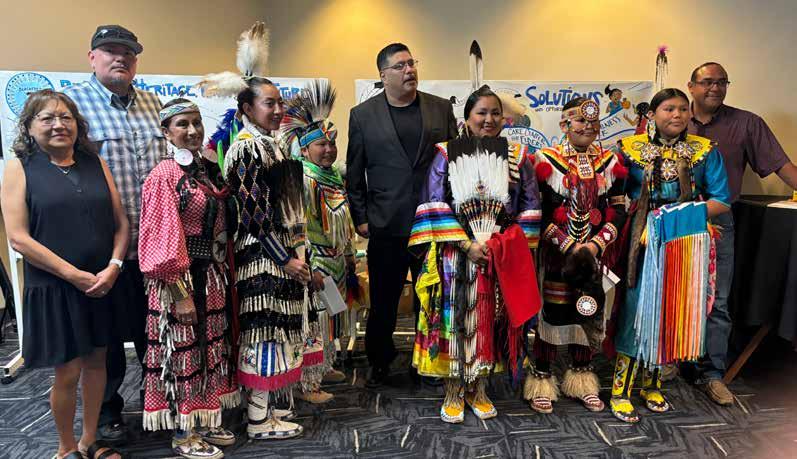
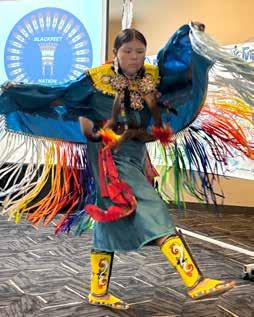
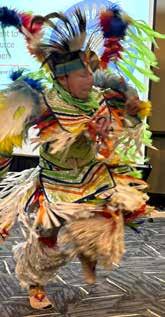
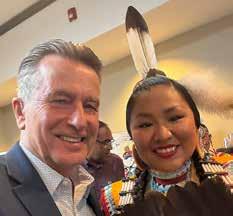



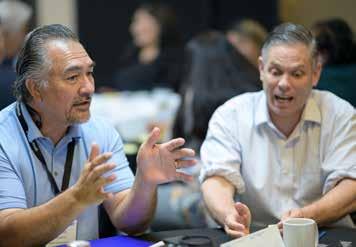
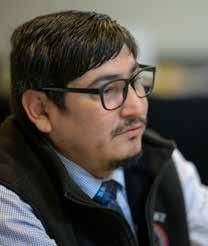
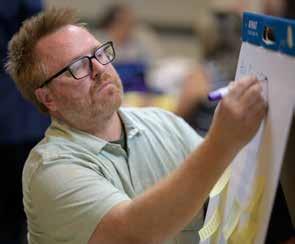
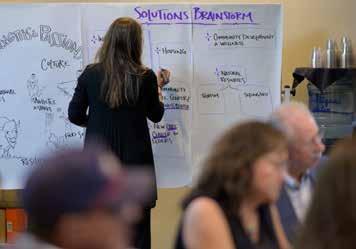

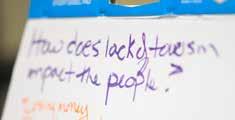
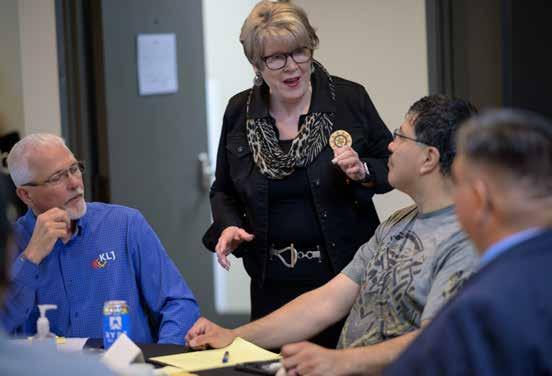
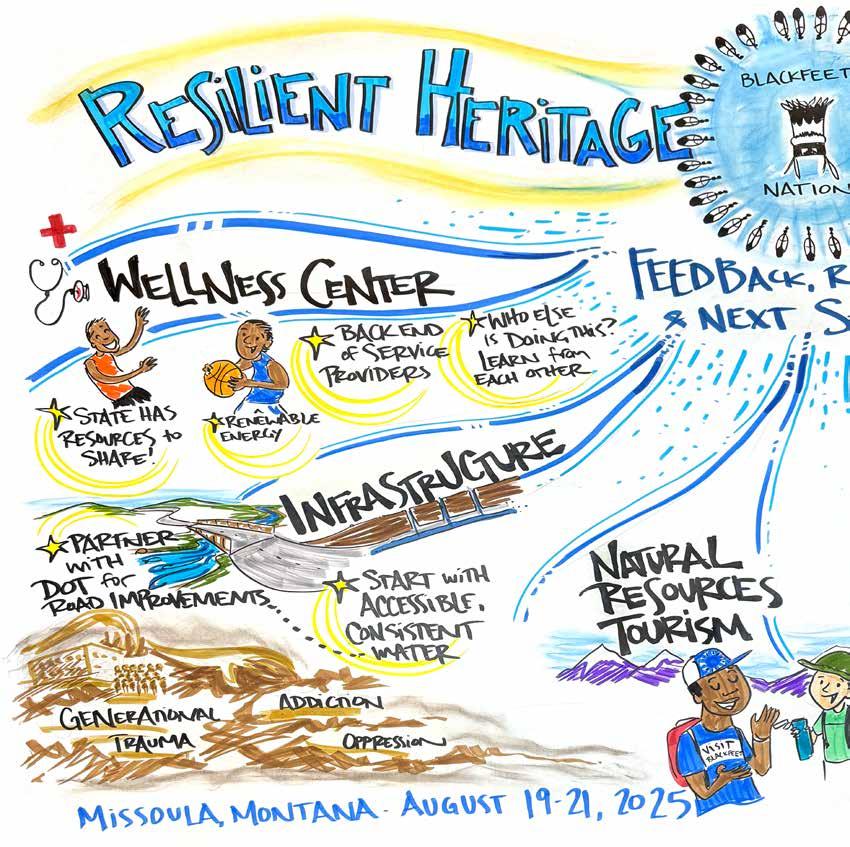
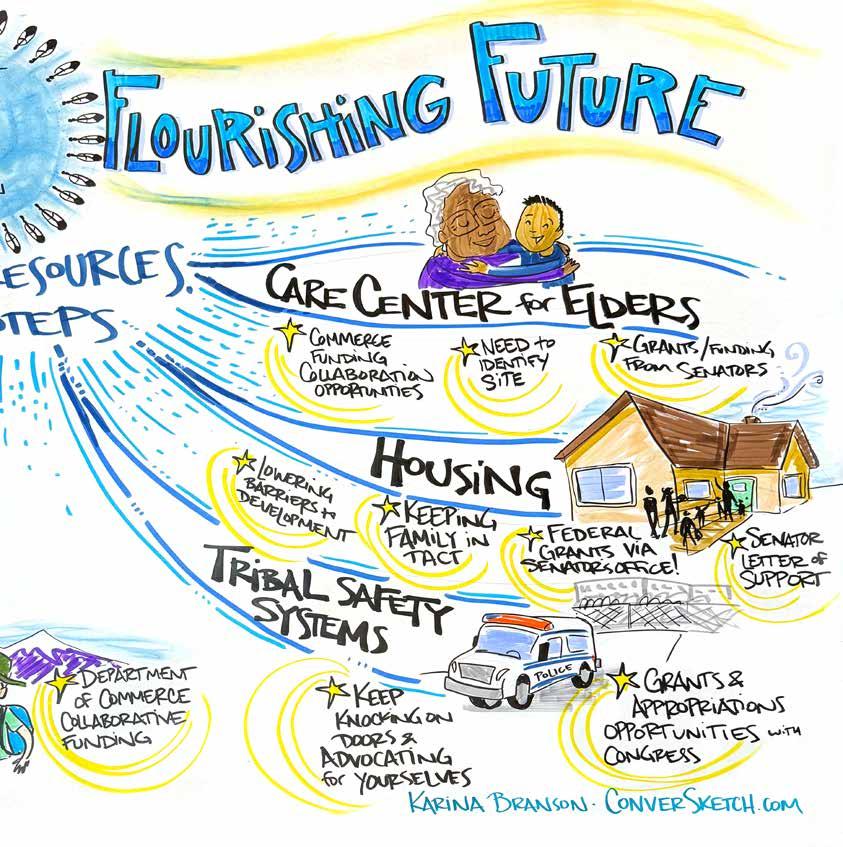
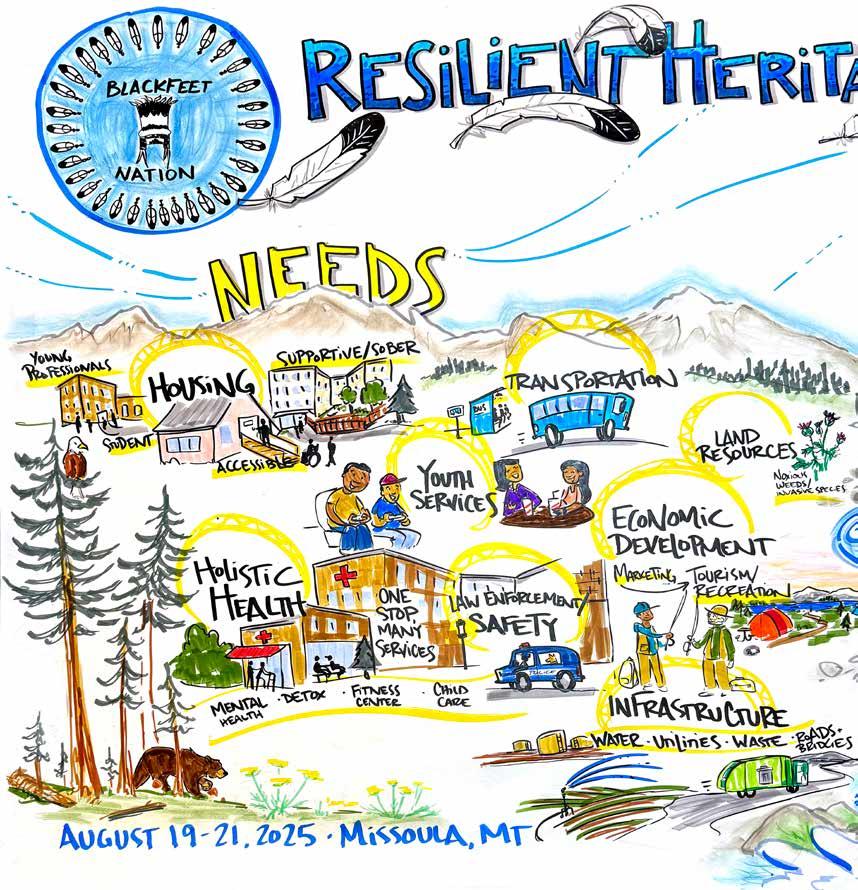
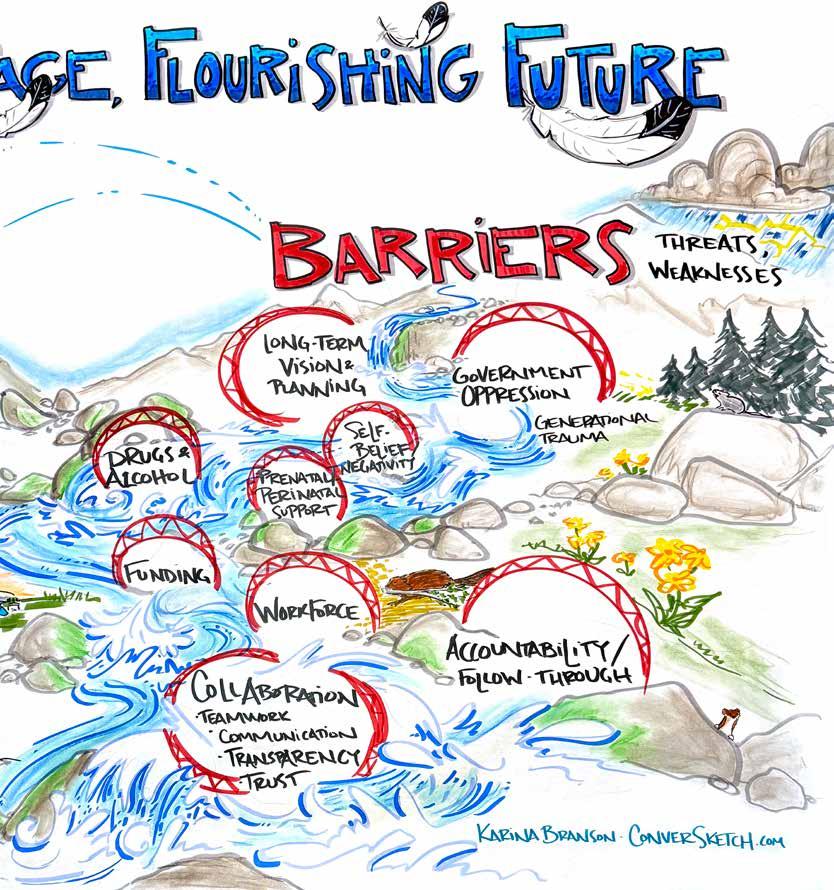
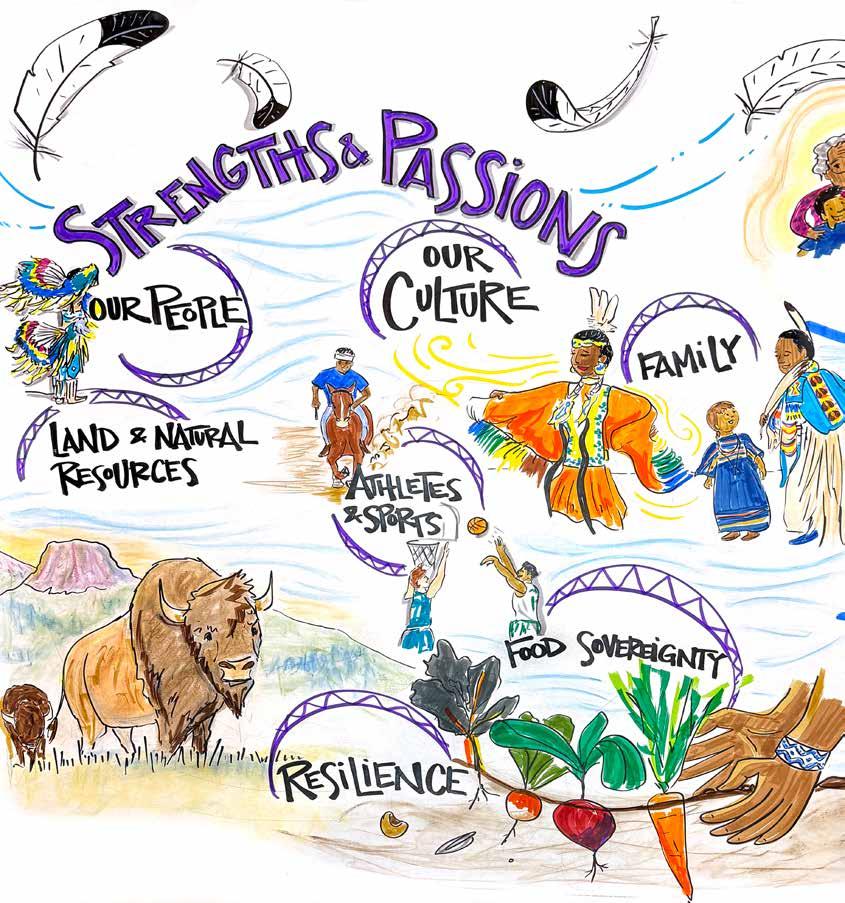
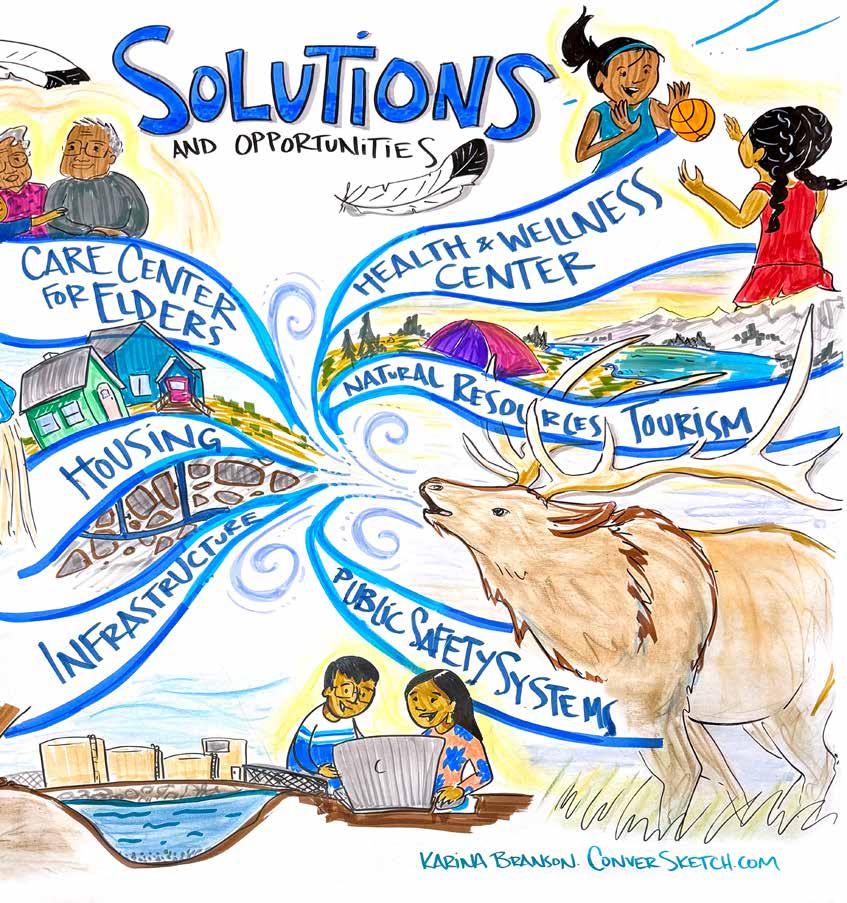




Reiner Lomb is the president and founder of BoomerangCoach His mission is to mobilize and develop leaders to help create a more sustainable and positive future for all That’s why he decided over a decade ago, at the height of his corporate career, to follow his passion and become an Executive Coach specializing in leadership development, innovation, and transformational change He is the author of The Boomerang Approach — Return to Purpose, Ignite Your Passion and ASPIRE: Seven Essential Emotions for Leading Positive Change, No Matter Where You Are (both sold on Amazon) His expertise draws on more than 35 years of experience in global management roles in the U S . and Germany and spans multiple industries with companies such as Hewlett-Packard, Sperry Univac (Unisys), and several European companies Reiner has earned an MBA in sustainable business from Pinchot University (now Presidio) and a master’s degree in computer science from the University of Paderborn (Germany) reiner lomb@boomerangcoach com
Beverly Santicola is an award-winning film producer, social entrepreneur, idea generator, problem solver, program developer, project facilitator, public speaker, and grant writing consultant Over the past ten years Santicola has focused her expertise and energy in the arenas of community development and collaborative partnership building for Native American tribes She work with a team of professional grant writers that have generated more than $1 billion in grant funding for clients and more than $200 million for Native American Tribes She has been nationally recognized for social innovation and leadership excellence by the U S Department of the Interior and Bureau of Indian Affairs, as well as Encore org as a 2010 and 2014 Purpose Prize Fellow bevsanticola@outlook com
Marc H. Santicola is a retired financial/accounting executive with over 40 years of experience in manufacturing and the energy industry He held various Controllership and Director of Finance positions with Fortune 500 companies (Schlumberger, Cameron International, Cooper Industries, Smith International) at the corporate, divisional, and plant levels working in executive leadership, project management, financial planning, systems implementation, organizational restructuring, and divestiture Marc holds a MBA degree from the University of Pittsburgh and is now working as a consultant with NeoFiber on the Tribe’s $36 million broadband project for the Ute Mountain Ute Tribe mhsanticola@outlook com
Becky Rosenleaf has been a Government Relations Specialist with KLJ for almost 11 years . She has been directly involved in identifying and then applying for several local, state, and federal grants for infrastructure, economic, and community development throughout the State of Montana as well as South Dakota and Colorado . She has over 35 years of experience in grant writing, communications, meeting facilitation, and government liaison work Prior to working for KLJ, Becky worked in the government and non-profit sectors In

her multiple roles, she researched and wrote grants for programs and services to address mental health, substance addiction, poverty, and housing that primarily served disadvantaged populations and at-risk families She is also a content specialist, authoring several Economic Development, Diversification, and Resilience Plans for communities and Tribes . becky rosenleaf@kljeng com

Karina Branson is a visual facilitator, founder, and owner of ConverSketch, where she uses hand-drawn images and text to reflect and distill the key ideas as graphic recording charts With a master’s degree in science communication, Karina’s scientific training and an innate ability to connect with people across cultures creates a unique blend of intelligences that enable her to synthesize and creatively capture meaningful content She has facilitated and supported collaborative strategic planning, community engagement, innovative brainstorming, and critical systems thinking to help groups move forward and into action She has worked across academic, corporate, governmental, and non-profit sectors Her clients are local and international, including Adobe, Cisco Systems, International Science Council, Future Earth, the National Security Agency, a multi-generational family of wealth, the United Nations University, Arizona State University, the National Park Service, the U S Forest Service, the Center for Public Deliberation, and others karina@conversketch com
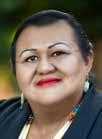

Bernadette Cuthair is an award-winning leader and member of the Ute Mountain Ute Tribe Since 1993 she has held professional roles balancing her demonstrations of strong leadership with a deep interest in serving her community Her background spans paralegal roles, investment coordination, and consulting . Between 2015 and 2025 she managed more than $150 million in community and economic grant projects She has been recognized by the U .S . Department of Energy as an Indian Energy Champion and received the Dr . Virgilio Licona Community Health Leadership Award from the Colorado Health Foundation
bcuthair@utemountain org
Anthony Two Moons is an Indigenous artist and photographer of Arapaho, A:Shiwi, and Diné lineages Following his studies, he started his career in New York City as a fashion photographer and continues today as a photographer and director based in New York and working everywhere His work has appeared in publications around the world He is the author of multiple award-winning books, including Growing Ute: Preserving The Language and Culture, volumes one and two, and Wíssiv Káav Tüvüpüa (Ute Mountain Lands) Anthony recognizes the extraordinary privilege and abundance of knowledge he has gained while working with talented individuals throughout his career As an Indigenous professional photographer and artist, equity plays a vital role in Anthony Two Moons’ work
a2moons@gmail com
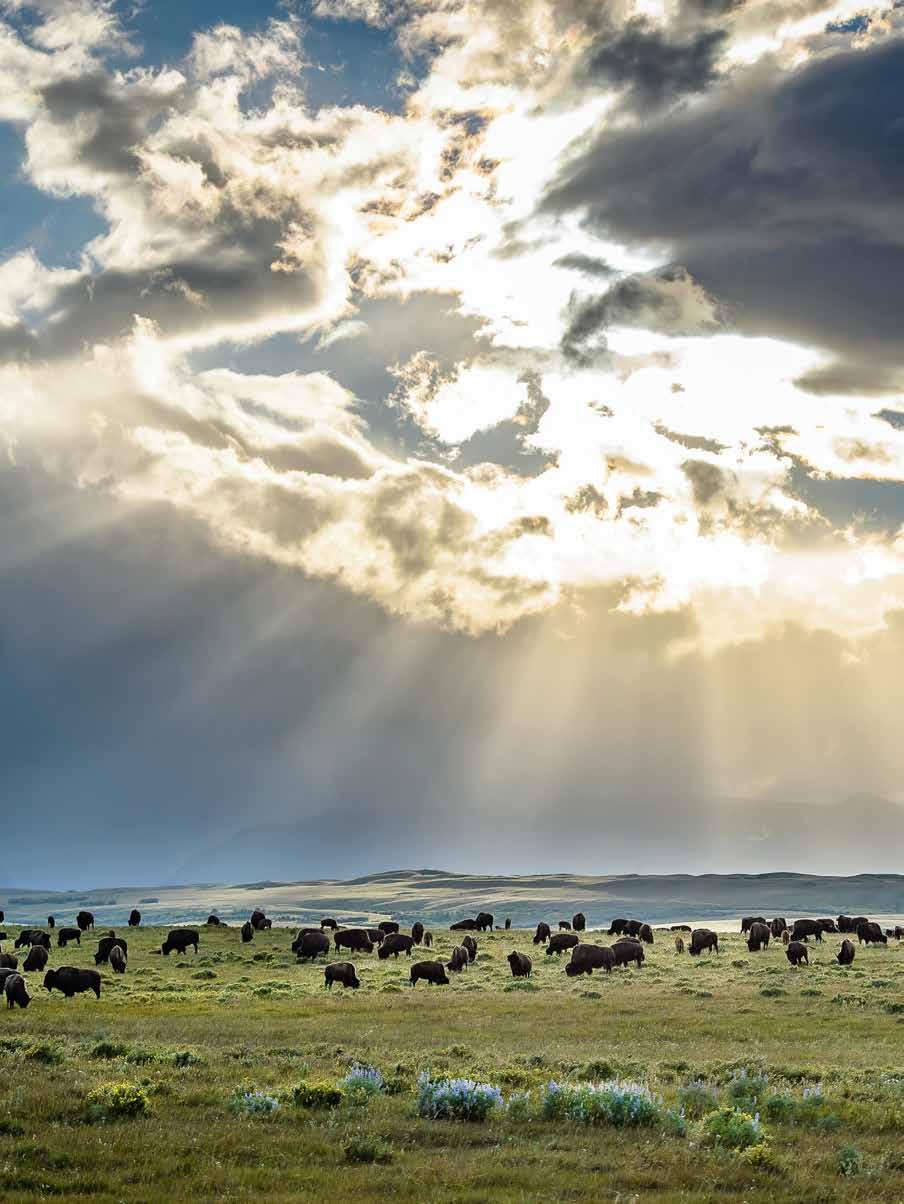

Siyeh Corporation today employs 350 people and runs multiple businesses, including convenience stores, casinos, campgrounds, hotels, and a broadband company.
While it is clear the Tribe has many challenges, there have also been significant successes, and the momentum to continue to build upon those is strong One of the strongest contributors to those successes is the Siyeh Corporation In an effort to create sustainable tribal enterprises that could produce revenue for the nation and meet the needs of citizens for jobs and services, Siyeh was established in 1999 This is a federally chartered, tribally owned corporation designed to manage businesses on behalf of the government and to protect those businesses from inappropriate political influence Named after a great Blackfeet warrior known for his fearless leadership, Siyeh Corporation today employs 350 people and runs multiple businesses that include convenience stores, casinos, campgrounds, hotels, and a telecommunications/broadband company (Siyeh Communications), which provides internet and phone services throughout the reservation Some of the most recent development successes directly attributed to Siyeh include:
l Development of Siyeh Communications which has eligible telecommunication, carrier status from the FCC (one of only four to five tribally owned communications companies in the nation with this designation) Siyeh Communications serves over 2,000 subscribers and is continuing to develop and expand their service base
l Multiple convenience stores/ gas stations throughout some of the most rural areas of the reservation, including locations in Heart Butte and East Glacier
l Operation of the KOA franchise campground in St Mary’s (following acquisition of the facility from the previous owner)
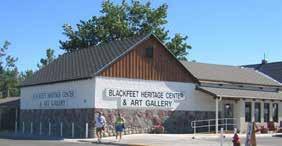
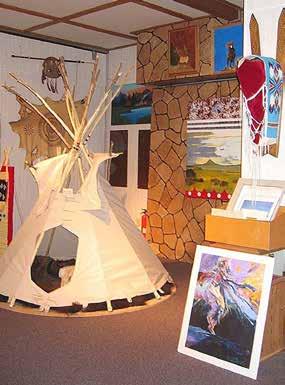
The Blackfeet Heritage Center & Art Gallery is owned and operated by the Blackfeet Nation’s Siyeh Corporation. The gallery features the work of more than 500 artists from 16 separate North American tribes.
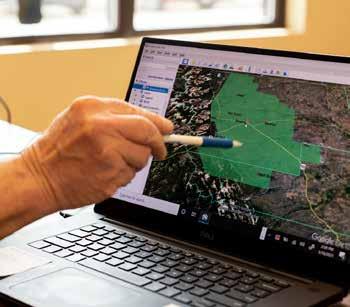

Siyeh Communications is a telecommunications/broadband utility chartered by the Siyeh Corporation, a federally chartered corporation of the Blackfeet Tribe.

In addition to projects for which Siyeh has taken lead, there are additional projects and events that exemplify successful economic development efforts already taking place on the reservation
l New Indian Days Arbor Structure and Grounds: This event center and surrounding grounds is in Heart Butte and supports multiple events associated with Indian Days (generally held in August of each year) These events support both community gathering and cultural tradition as well as economic development efforts
At 42,000 square feet and made with 368,000 pounds of steel, the new arbor seats 2,400 people in its bleachers and has a capacity of about 4,500 people total.
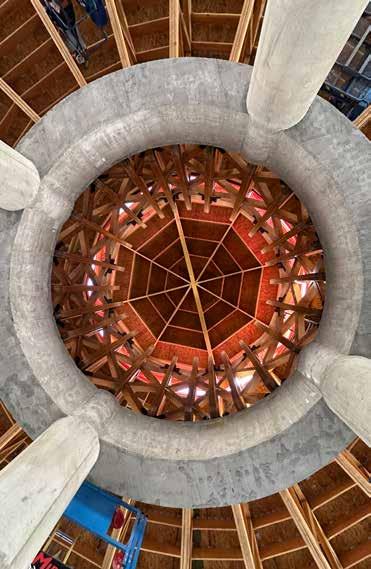
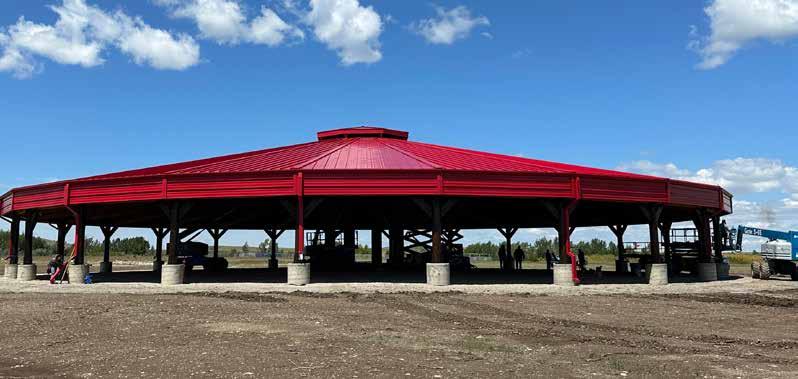

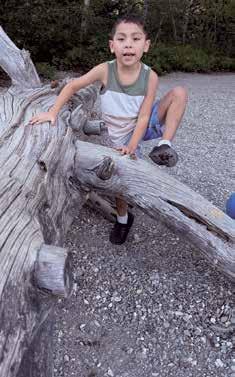
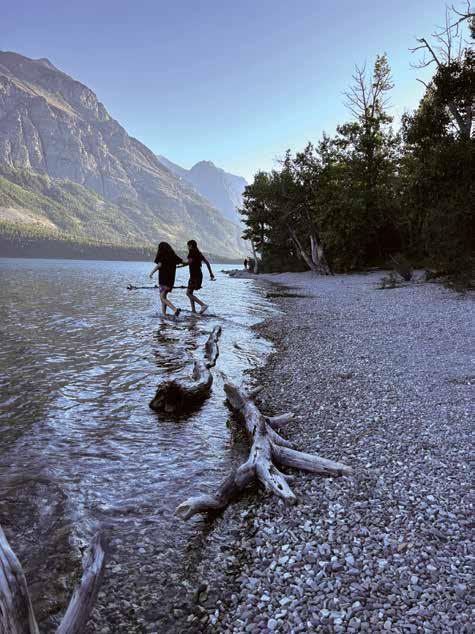
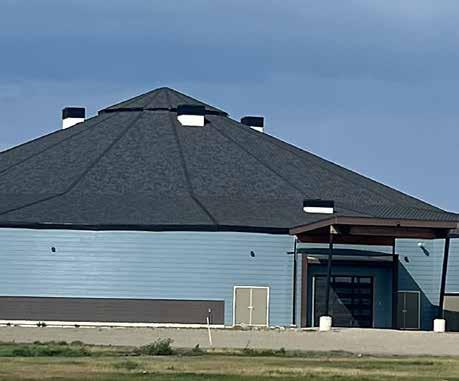
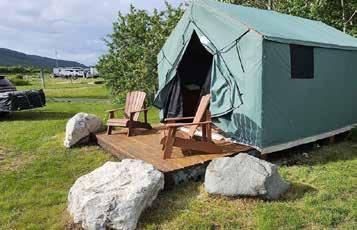
The St. Mary KOA campground is independently owned by the Blackfeet Nation and managed by Siyeh Corporation. This KOA is uniquely positioned at the eastern gateway to Glacier National Park, just one mile from the park entrance and Going-to-the-Sun Road.
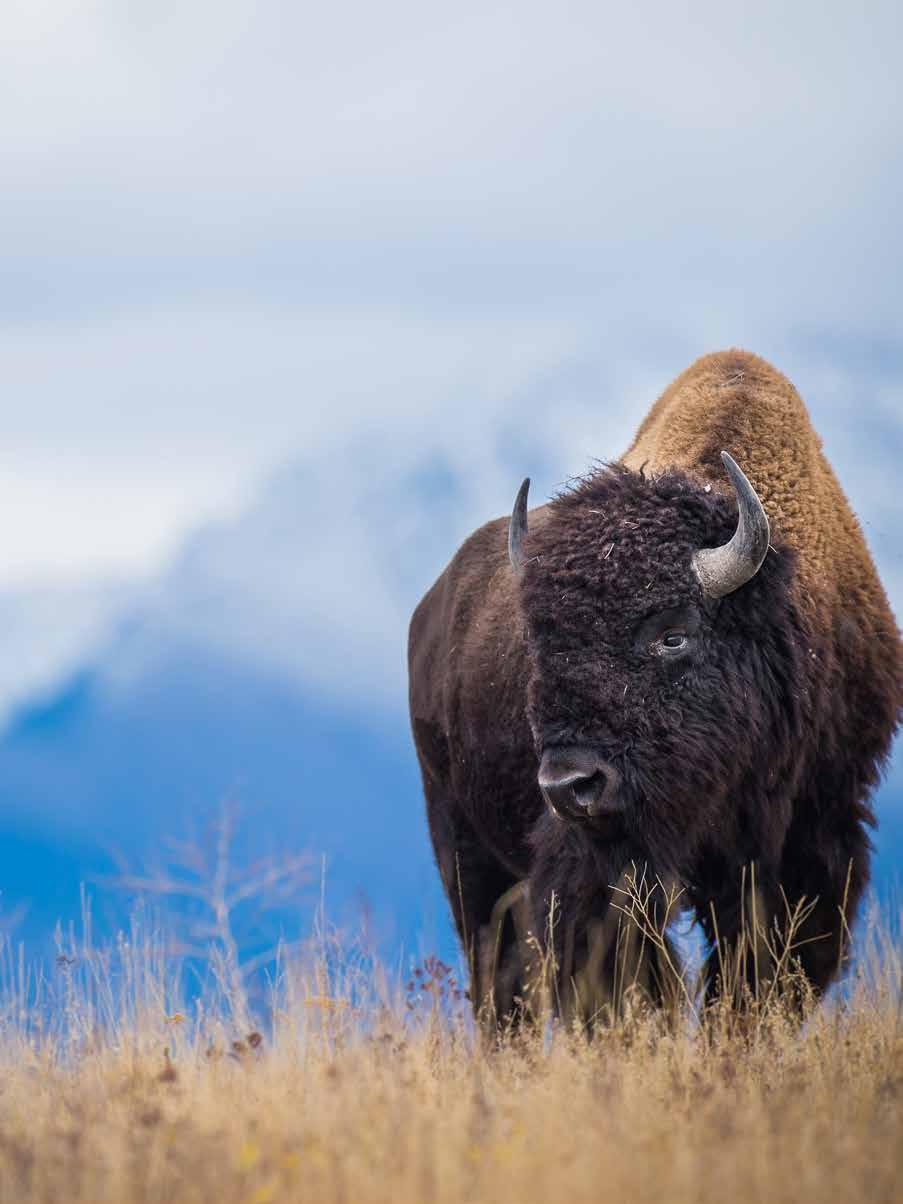

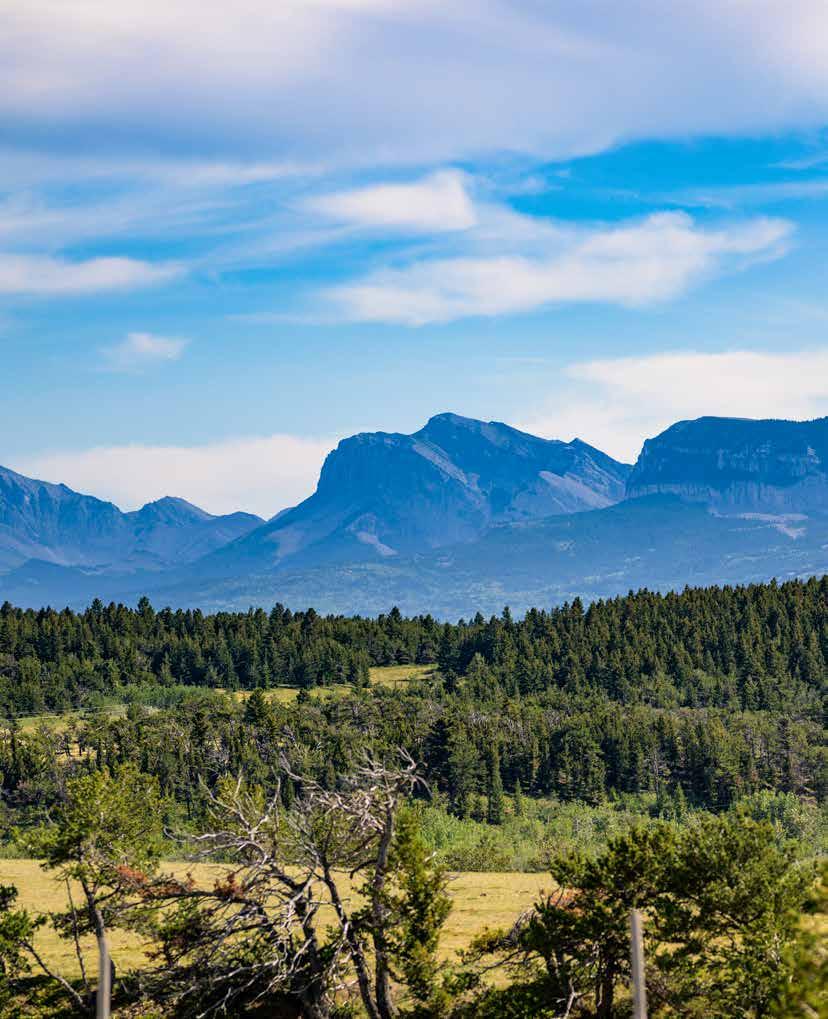

Goals and objectives seek to balance growth and development with the unique culture and historic economy of the Blackfeet Reservation and rural Montana While it is critical that Tribal leadership continue to respect and foster their sovereignty, it is important to consider ways in which the Reservation and the overall tribal economy may benefit from outside partnerships at the regional, state, and federal levels
In addition to public input, the establishing of goals and objectives considered regional background information, current economic trends, and previous CEDS Goals and objectives seek to:
l Foster economic development and opportunity;
l Increase the size and quality of the workforce through housing development, training opportunities, and fostering a sense of culture and community;
l Create a welcoming environment that supports small business and encourages entrepreneurial efforts;
l Provide essential services, amenities, and family support for residents and visitors;
l Create inviting, prosperous, and thriving hubs in community areas that support business and appeal to visitors/tourists;
l Help the community to understand and address the negative impacts of generational trauma, which include substance addiction, mental illness, poverty, and violence;
l Address infrastructure investments that support economic growth including water and wastewater, transportation, and structural facilities
While there were multiple facilities, system changes, infrastructure improvements, and land development opportunities identified, Tribal leaders and department administrators narrowed the immediate scope to five primary areas of focus and then to a series of goals and objectives within that framework . The five areas of focus are:
TRIBAL SYSTEMS/POLICIES
INFRASTRUCTURE
COMMUNITY FACILITIES
HOUSING
TOURISM/NATURAL RESOURCES
Six specific project goals and their related objectives are highlighted and detailed Following each of those is a list of additional projects and opportunities that were considered and continue to be a priority for the Tribe moving forward
Crime rates are high on the Blackfeet reservation. The prevalence of property crimes and family violence plagues communities and erodes the culture.
Several Tribal systems and policies were called out as significant barriers to longterm economic development . The overall impression garnered from public input and during the retreat highlighted inconsistency in leadership (high turnover), nepotism, inconsistent or outdated policies, lack of training at all levels of government, lack of communication between the Council and the departments and between departments, lack of accountability in leadership, and a related lack of follow-up and “action ”
This led to recognition that there are foundational issues within the Tribe (internal weaknesses) that threaten the Tribe’s ability to pursue other identified goals While there were several areas in which room was found for improvement in the systems that govern and facilitate work in the Ttribe, the one that repeatedly rose to the top as having the greatest impact was the Tribal legal and judicial system
Crime rates are high on the Blackfeet Reservation . The prevalence of property crimes and family violence plagues communities and erodes the culture . Many/ most of these crimes can be traced back to the effects of substance addiction and mental illness, symptoms of generational trauma By way of example, according to Montana Department of Public Health and Human Services, between 2019 and 2021, the opioid overdose death rate for indigenous people was twice that of non-indigenous people
Compounding the issues, response to crimes is inconsistent and often leads to a lack of accountability or ability to find “justice” for families impacted by violence The Tribal judicial system is lacking in funding resources, training opportunities, staff capacity, qualified staff, and facilities that would support consistent and effective criminal justice response
Additional projects and processes identified for future consideration in addressing Tribal System challenges are as follows:
Review/updating all Council and Tribal department regulations and guidance
Implementation of consistent and ongoing training opportunities for Council and Tribal Department Staff
Create opportunities for increased advocacy specifically within the legal system
Add/consider outside contractors/project managers to aid in ensuring “politics” stay out of project priorities in each Tribal department and with Council
Create a Tribal vision consistent through administration/department staff changes
Establish additional opportunities for Tribal department networking and consistent/ongoing communication between departments and with Council
Implement regular public engagement opportunities that help instill community understanding and pride
Address noxious weed policy and related needs
Address animal control and related needs
Hire a minimum of six new law enforcement officers & provide enhanced training for all officers
Update the Tribal Law and Order Code
Improve IT/records and increase the number of facilities (detention facility/holding facilities)
BIA, TTPSF, NHTSA)
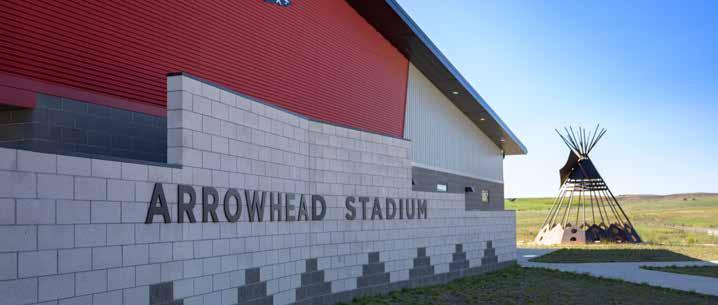
Both the current water and wastewater systems on the reservation are substandard.
According to a 2021 U S Chamber of Commerce Report, How Infrastructure Impacts Business, “Improved Infrastructure helps grow the economy, generates revenue for businesses, and creates jobs for people ” In short, the development of water, wastewater, and transportation infrastructure is the cornerstone of economic development
Several infrastructure deficits were identified, including those related to transportation/transportation facility signage, IT, zoning, energy, and structural development to support business/ entrepreneurship . Most critically though, water and wastewater rose to the top of the immediate infrastructure needs . Both the current water and wastewater systems on the reservation are substandard . There are issues with water pressure, water access, water management, and wastewater capacity (lagoons) that hinder the Tribe from development of critical health and wellness facilities and expansion of housing and business
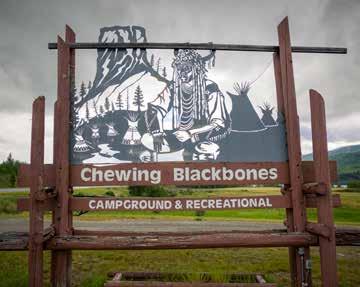
Additional projects identified for future consideration in addressing infrastructure challenges are as follows:
Updated/upgraded water treatment center
Infrastructure that supports revitalization of Main Street (sidewalks, ADA accessibility, development of “empty” space)
Transportation infrastructure improvements (increased signage and improved/ safety improvements for roadways)
Updated IT programs (moving from paper to paperless in all departments including public works)
Updated zoning policies/codes
Development of professional buildings/business locations
Establishing energy sovereignty
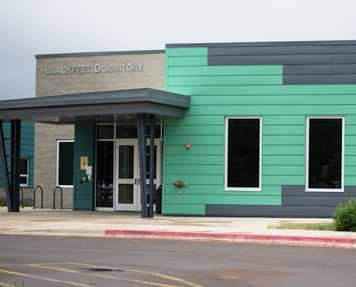
Improve water access (connect new water pipes and replace old pipes
Increase water pressure (pumps and storage tanks)
Increase wastewater capacity (North & South Lagoons)
BTBC Water Dept
BTBC Water Dept
BTBC Water Dept
September 30, 2028 $11.6 million
(Water Compact, DNRC, EPA, MCEP, CDBG, USDA, DEQ/SRF)
September 30, 2030 $15 million
(Water Compact, DNRC, EPA, MCEP, CDBG, USDA, DEQ/SRF)
September 1, 2026 $9 million (DNRC, EPA, MCEP, CDBG, USDA, DEQ/SRF)
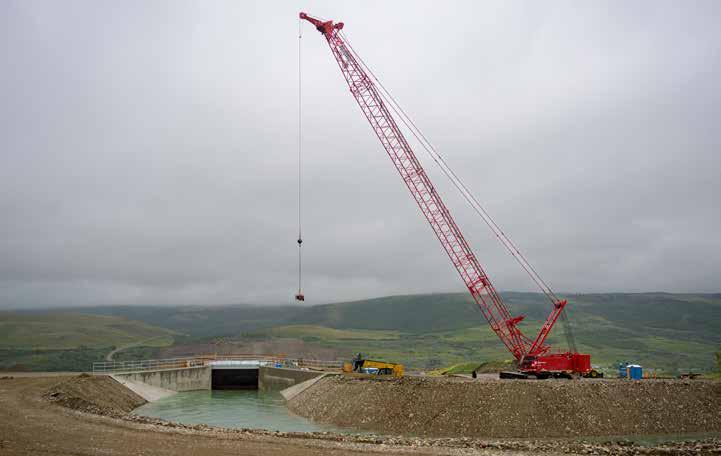
A wellness center is critical in addressing overall community care and healthy recreational opportunities for the entire reservation.
As previously indicated, the Blackfeet Tribe is deeply impacted by generational trauma that has, in many cases, resulted in disproportionately high rates of substance addiction and mental and physical health issues The suicide rate on the Reservation is five times that of Montana residents outside the Reservation About 33% of the Reservation’s residents are estimated to be living below the poverty line and 76% of Browning residents are low-income This is starkly more than Montana’s poverty rate of 12% and a low-income rate of 32% This results in increased numbers of people who are homeless and increased crime rates Rates of cancer, diabetes, cardiovascular disease, obesity, and chronic respiratory disease are also higher among people living on the Blackfeet Reservation than for other Montanans Yet, there is less access to high-quality and specialized medical careaccess to high-quality and specialized medical care is less on the Reservation,
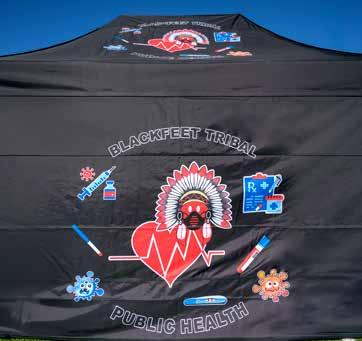
forcing people to travel significant distances to access appropriate care
While these concerns impact the entire community, addressing these issues becomes increasingly important when discussing youth/young families and elders The rates for prenatal drug exposure are high, and prenatal care is difficult to access Young families have few healthy activities in which to participate, making it difficult to break the intergenerational cycle of abuse, neglect, family violence, and generally poor health outcomes
A wellness center is critical in addressing overall community care and healthy recreational opportunities for the entire reservation . This holistic approach will ensure community members have access to physical, mental, cultural, and spiritual activities that heal the whole person and the whole family
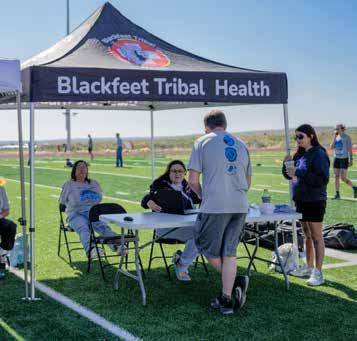
Conduct additional community engagement and complete an updated needs assessment
Identify and secure facility site and finalize preliminary design
BFCC
Tribal Health
Support Advisory Council
Project Lead
Community Stakeholders
January 31, 2026
$35,000
(MT DOC, CDBG, EDA, Water Compact)
March 31, 2026
$750,000 (Design)
$500,000 (Site Acquisition/Prep)
(MT DOC, CDBG, EDA, Water Compact)
Complete construction of the wellness facility
Develop and secure partnership agreements and MOUs
Project Lead
Community Stakeholders
Project Lead
Community Stakeholders
December 31, 2028
$50 million
(Previous Investment $20 million – EDA, USDA, SAMHSA, CDS)
February 28, 2026
$25,000
(MT DOC, EDA, Water Compact, Previous Investment)
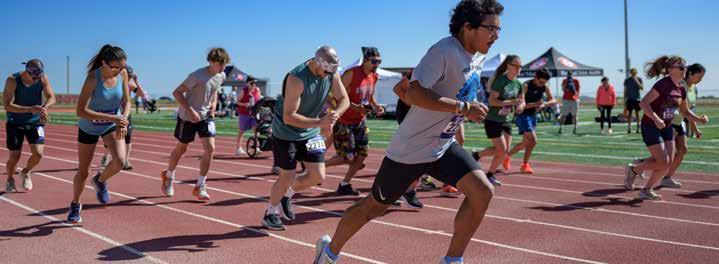
The existing elder care center does not have adequate capacity and is in a state of disrepair to such a degree that the facility will be condemned in the next few years.
The cultural significance of elders in the Blackfeet Tribe is also profound They are the custodians of the Tribe’s history, traditions, and spiritual beliefs They are not only respected for their age, but for their deep knowledge of the Tribe’s customs and practices They play a crucial role in the transmission of cultural values, teachings, and practices, ensuring that the legacy of their ancestors continues to thrive
The existing elderly care center does not have adequate capacity and is in a state of disrepair to such a degree that the facility will be condemned in the next few years . This is forcing elders to be removed from their communities, separating them from families and threatening cultural values
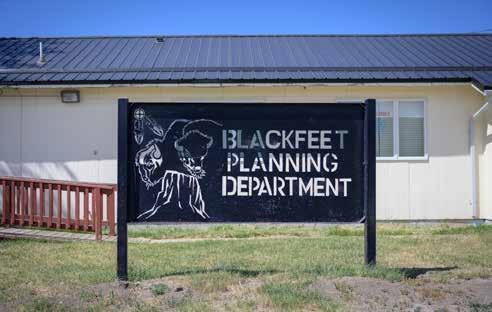
Additional projects identified for future consideration in addressing community facility challenges are as follows:
Detention & holding facilities (which is addressed more fully in Tribal Systems), including a youth detention facility
Amenity “structures” (i.e., theatre and bowling alley)
Prenatal care and wellness center
Central location for child welfare systems/services
Detox center (pre-treatment)
Proper trash disposal/recycling center
Small business incubator
Transfer facility
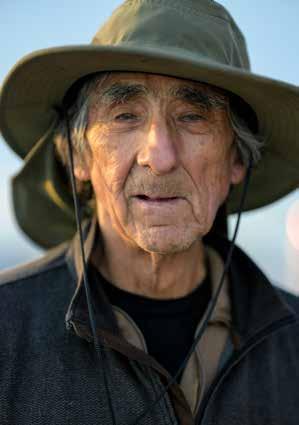
Consider/apply for USDA loan/ grant and low-income tax credits Planning
Complete a facility and infrastructure feasibility study Planning BTBC
Complete architectural and engineering design and move forward with construction
Planning BTBC
March 31, 2026
October 1, 2026
October 1, 2027 (design)
October 1, 2029 (construction)
$100,000 (USDA, LITC)
$3 million (MT DOC, CDBG, EDA, USDA, low-income tax credits)
$13 million (design & construction) (MT DOC, CDBG, EDA, USDA, LITC)
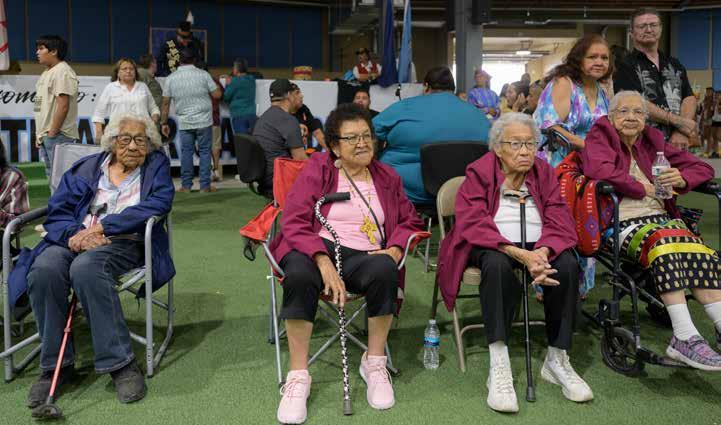
There are approximately 13,000 residents on the Blackfeet Reservation with only 800 Tribal houses and 350 privately owned homes.
Lack of adequate, affordable housing is a national crisis, but no more so than on Tribal lands Blackfeet Nation is no exception Housing on the Reservation is subject to overcrowding, with multiple families living in one home The average household size for owner-occupied units is 23% higher than the Montana average, and the rate for renter-occupied units is 68% higher There are approximately 13,000 residents on the Blackfeet Reservation with only 800 Tribal houses and 350 privately owned homes It is estimated that there are approximately 900 homeless students (this includes college-aged students as well as children under the age of 18)
Additionally, housing stock is old, in poor condition, and sometimes unsafe According to the National American Indian Housing Council, 40% of on-reservation housing in the U S is considered substandard, compared to 6% of U S housing The reservation also lacks “specialized housing ” This includes transitional housing (for people leaving the corrections or substance treatment facilities), shelter care (for victims of domestic violence), ADA accessible homes for
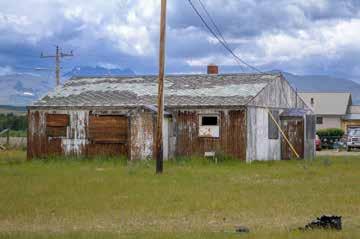
the disabled and elderly, student housing, and housing for young families or singles
Like infrastructure challenges, addressing housing is key to the ability to recruit and retain workforce and to addressing other business and economic development issues .
While Goal 5 contemplates the addition of various types of housing, given the current lack of general resident housing, it is very likely the initial focus will be on the development of single-family homes For future consideration, in addressing housing deficits, the following specialized housing priorities are as follows:
Transitional housing (for individuals leaving substance addiction treatment and/or the criminal justice system)
Young family and/or single-person housing
Elder housing (ADA-accessible)
Student housing
Shelter care (for victims of domestic violence)
Youth housing/youth group homes

Conduct a housing inventory and feasibility study
Housing Manager/ Director
Housing Board
Based on the inventory and feasibility study, identify home types and locations and complete architecture and engineering design
Construct homes as identified and designed in objective 2
Housing Manager/ Director
BTBC
Housing Board
Housing Manager/ Director
Housing Board
December 31, 2026
$10 million total for all three outlined objectives (MT DOC, CDBG, EDA)
December 31, 2027 (CDBG, HUD, National Business Capital, SAMHSA, National Institute of Health, Housing Tax Credits)
December 31, 2029
(CDBG, HUD, National Business Capital, SAMHSA, National Institute of Health, Housing Tax Credits)
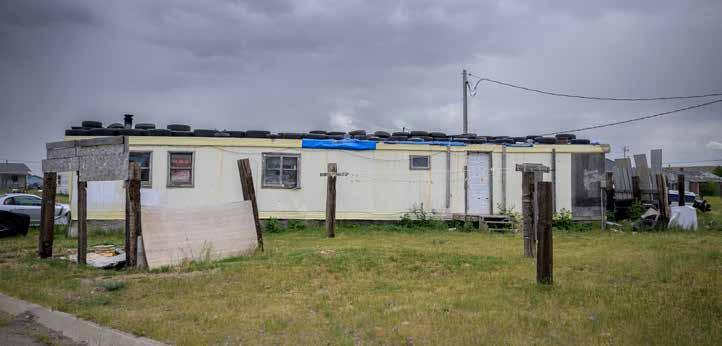
There are cultural considerations in tourism, and a fine line between encouraging tourism and visitation and exploiting Tribal residents and cultural practices.
The Blackfeet Reservation is at the entrance to Glacier National Park According to the National Park Service, Glacier consistently hosts around 3 million visitors annually In 2022, an estimated 568,404 visitors entered the park through either the Two Medicine or St Mary entrance, directly via state highways that run through the community of Browning .
The reservation is also central to additional outdoor recreational opportunities Many of the visitors who come to Glacier seek to stay in the area to take advantage of numerous camping, hiking, fishing, skiing, and backpacking opportunities the region offers This area is some of the most beautiful in Montana and in the country It is, however, underdeveloped in terms of attracting tourism dollars Particularly in Browning, the “main streets” are not appealing to visitors There is a lack of businesses, issues with infrastructure and animal control, and a general, albeit false, perception that the community is unsafe or unwelcome to visitors
While Siyah has done substantial work to contribute to the tourism economy, there are still significant barriers . Land development on the reservation is difficult and is often delayed based on whether property is trust land, fee land, or privately owned/leased Additionally, environmental and cultural resource work to allow for development is
slow, expensive, and cumbersome, extending development times beyond what most private developers are willing to wait There are also cultural considerations in tourism, and a fine line between encouraging tourism and visitation and exploiting Tribal residents and cultural practices While these can be overcome, they add an extra layer of consideration to the process .
Additional projects identified for future consideration in addressing tourism/ natural resources and/or projects discussed for consideration/prioritization in the identified tourism development and feasibility plan are as follows:
Main Street revitalization projects, to include:
• Improved roadway and sidewalk infrastructure (walkable/ accessible Main Street)
• Demolition of abandoned/ not-viable structures
• Building of tourism related businesses/buildings to support tourism (boutiques, restaurants, theatres, parks, cultural facilities)
Development of a reservationwide marketing campaign
Development of a smallbusiness incubator facility
Ecotourism plan
Establish a Tribal Office of Tourism, Marketing & Media
BTBC Planning
Complete a tourism development and feasibility plan (inventory of existing efforts, public engagement and project identification/prioritization)
Identify and complete at least one “low cost-high impact” Browning Main Street Beautification Project
BTBC
Tribal Office of Tourism, Marketing & Media
March 31, 2026
BTBC
Tribal Office of Tourism, Marketing & Media Community stakeholders/Main Street property owners
December 31, 2026
$100-$150,000 (for hiring of staff and providing office space/resources) (MT DOC, EDA)
$100-150,000 (for hiring of a consultant to complete the feasibility/ tourism plan and delivery of report)
December 31, 2026 $25,000
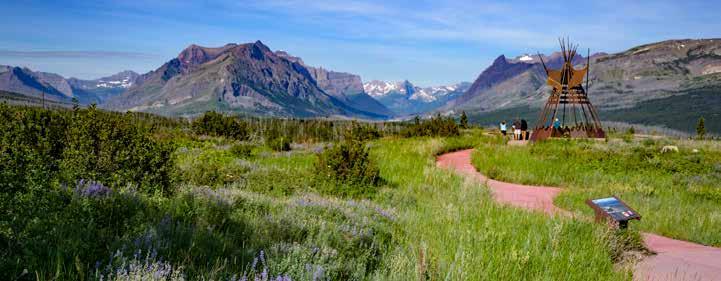
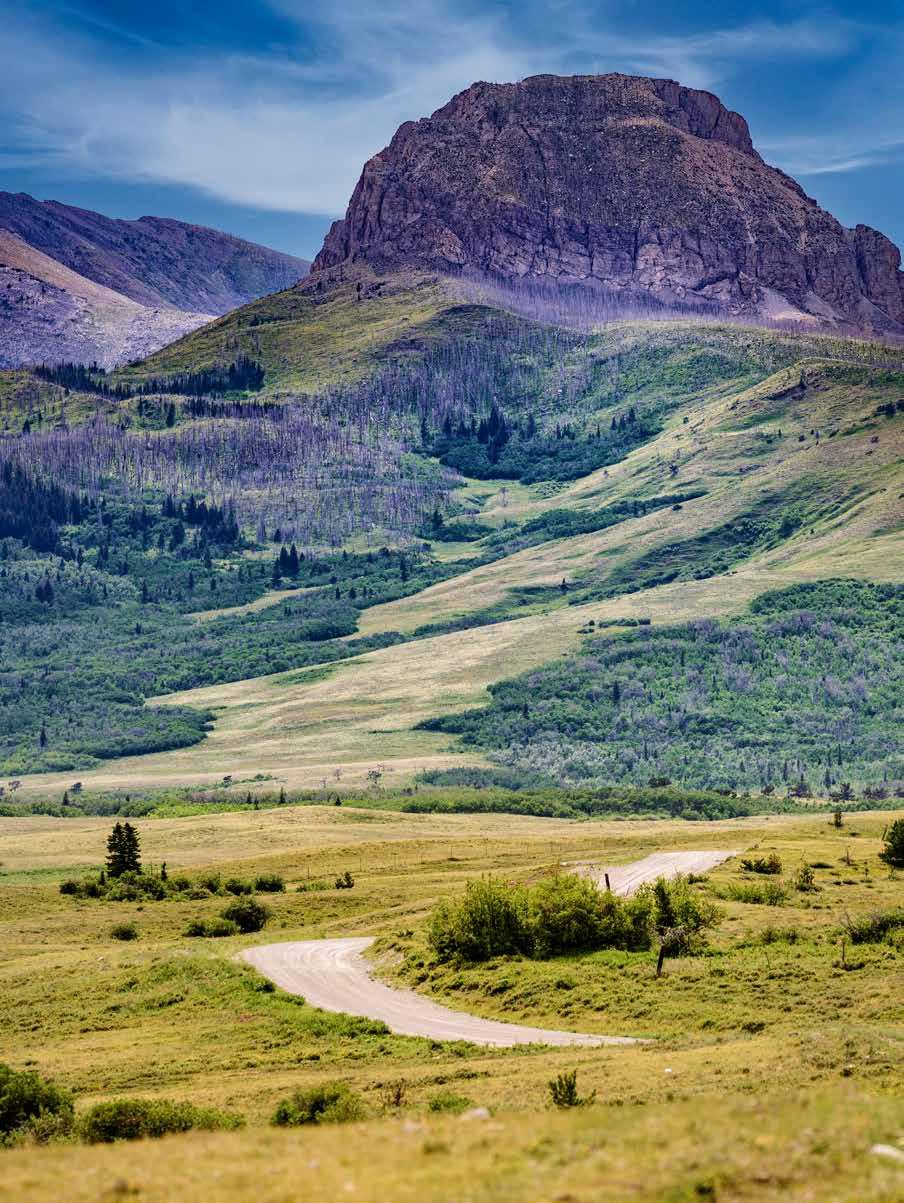

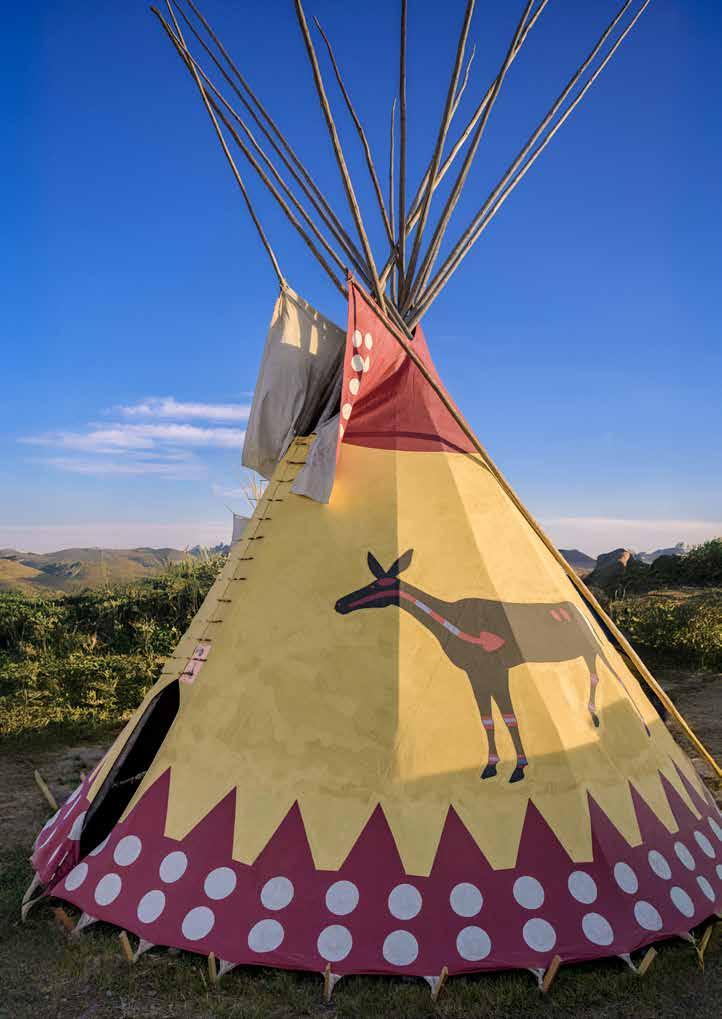
It is becoming apparent that economic prosperity is increasingly linked to the ability to prevent, withstand, and quickly recover from major disruptions to the local and global economy
In the context of economic development, economic resilience includes three primary attributes:
1 The ability to recover quickly from the disruption or shock;
2 . The ability to withstand the disruption or shock; and
3 The ability to avoid the disruption or shock altogether . Establishing economic resilience requires the ability to anticipate risk, evaluate how risk can and will impact key economic assets, and build a responsive capacity (EDA, Economic Resilience, 2020)
Every year, people and communities experience disasters and other major disruptions that impact the economy These can be the result of damaging weather events, the decline of a significant industry, or the closure of a major employer
The financial, social, and environmental costs of these disruptions represent substantial drains on governments, businesses, communities, and the nation
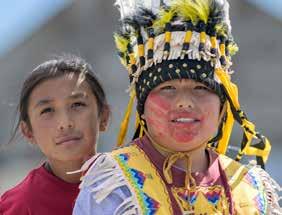
1 .
Planning for and implementing specific goals and actions that increase the long-term economic durability of the reservation (steady-state initiatives) .
2 .
Establishing and enhancing information networks among regional stakeholders that encourage active and regular communications between the public, private, educational, and non-profit sectors, promoting collaboration that allows for faster and more effective responses to potential future challenges (responsive initiatives)
1
2
3
. Community leaders will be aware of efforts in the county and region, and where appropriate and possible, participate in hazard mitigation planning and processes
. In addressing workforce and resident retention, the Tribe will consider programs that encourage a flexible and multi-level workforce that can better shift between jobs and industries . This includes goals that support business development and retention, financial assistance for workforce, and customer service, growth, and business succession planning
. More workers are working remotely . Given the importance of a strong and reliable telecommunications network in recruiting and supporting these workers, ensuring reliable and consistent telecommunications and broadband networks to protect commerce and public safety should be a priority The Tribe will advocate for, and support, telecommunications and broadband development that support remote work opportunities, a diverse workforce, and public safety The Tribe will consider programs that encourage a flexible and multi-level workforce that can better shift between jobs and industries.
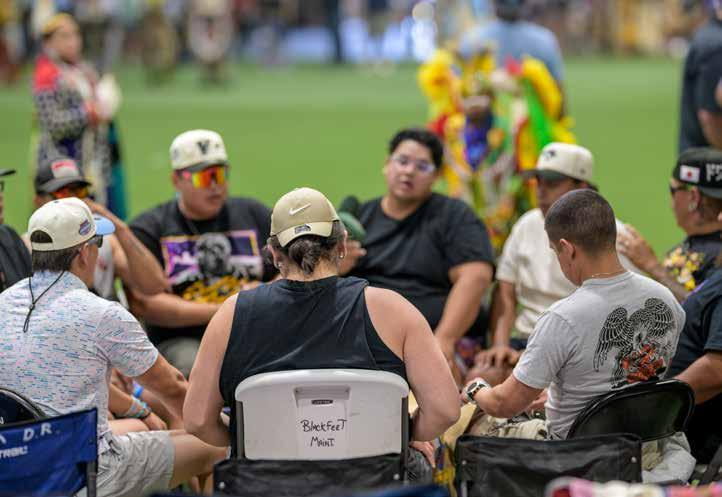
The Blackfeet CEDS serves as roadmap to empower the Tribe to develop and implement a plan of action, utilize resources efficiently, and embedding economic diversity into goals and objectives There is no silver bullet Creating a resilient and diversified economy is a series of long-haul strategies through multiple community initiatives coming together to give support and balance to one another
Moving forward, continued community engagement is critical The Reservation sustains itself due to the legacy of families that have created homes and lives in a sometimes-brutal natural environment and with few traditionally urban resources There is a need to balance steady growth and development that also reflects the sovereignty, unique culture, and historic economy of the area
1
. The Tribe will plan and implement goals and objectives that embed resilience in the workforce and communications, as well as collaborative goals that seek to grow and maintain long-term economic durability
There is a need to balance steady growth and development that also reflects the sovereignty, unique culture, and historic economy of the area.
2
. Natural disasters, such as drought, flooding, hazardous materials spills, severe winter storms, strong wind events, and wildfires have and could potentially heavily impact Tribal and rural communities Resilience planning considers improvements that keep communities and related emergency services connected to minimize these negative impacts
3
. Infrastructure, especially transportation infrastructure, has been identified as an essential piece of growth Strong community infrastructure should be addressed for both access and emergency response resiliency in addition to addressing the health of businesses, tourism growth, and quality of life
4
. As part of the discussion related to disaster preparedness and economic resilience, addressing hotter temperatures, drier conditions, and extreme weather patterns is important This is particularly relevant when discussing infrastructure resilience and the agricultural industry and should be considered in community conversations and planning

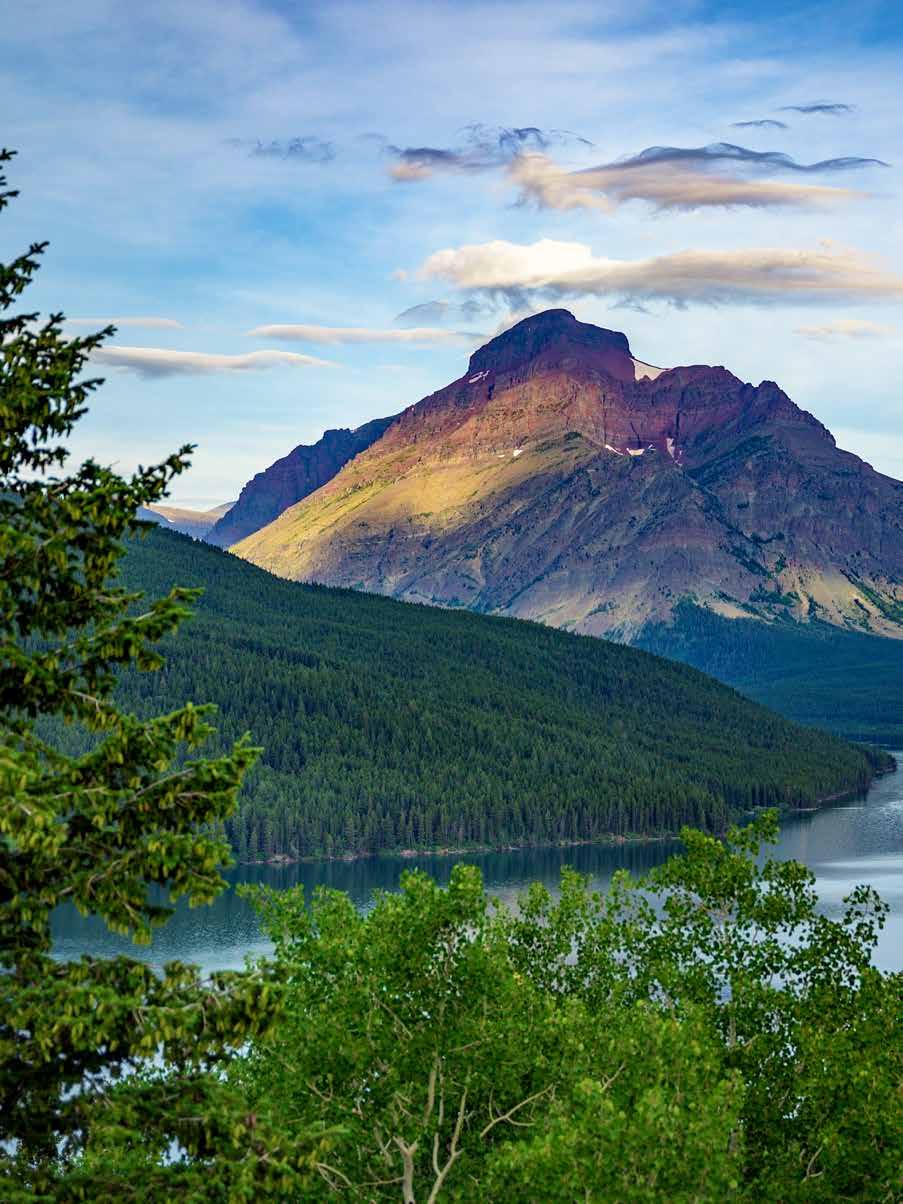

Would you mind sharing a little about yourself?
(i.e. your role and what success looks like in your role.)
What Tribal issue or needs are you most passionate about and why?
What idea do you have that you think is most needed to meet those needs?
What are the key obstacles that you are encountering in implementing this idea?
What would you need to overcome these obstacles and see this idea implemented?
How do you envision the upcoming retreat helping to overcome those obstacles?
To schedule your interview, please contact Paulette Butterfly at p.butterfly@blackfeetnation.com or call (406) 845-3330.
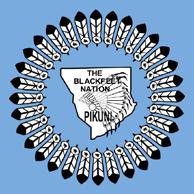
You have been selected to participate in a 30-45 minute Zoom session in the Planning Department with Paulette Butterfly and the Center for Rural Outreach & Public Services, Inc. (CROPS) at your earliest convenience the first week in April, 2025.
We need your help to custom design the Blackfeet Tribe Native National Strategic Planning Event scheduled August 19 – 21, 2025 in Aurora (Denver), Colorado.
The purpose of this interview is to guide our consulting team so they deliver a highly successful strategic planning retreat that will meet the needs of the Blackfeet Tribe, its members, and funding goals. We’d like to schedule your interview as soon as possible so please coordinate date and time with Paulette Butterfly.
Please choose from the following dates and times. Each interview will only last 30 to 45 minutes.
Monday, March 31 2 – 5pm MST
Tuesday, April 1 2 – 5pm MST Wednesday, April 2 2 – 5pm MST
Thursday, April 3 2 – 3pm MST
Friday, April 4 2 – 5pm MST
Paulette Butterfly, Director of Planning/Economic Development 3/28/25
Warren Blackman, Transit Director 3/31/25
Tenniell Tatsey, Credit Partner Director 3/31/25
Lydia Spotted Eagle, Revenue Program Director 4/1/25
Dr. Brad Hall, President of College 4/14/25
John Milanich, General Manager Casino 4/15/25
Dana Pemperton, Personal Director 4/15/25
Everett Armstrong, Council Member 4/28/25
Connect – Introductions and explanation of purpose of the CEDS and the interviews
1 . Would you mind sharing a little about yourself? i e your role and what success looks like in your role
2 . What Tribal need or needs are you most passionate about and why?
3 . What economic development initiative do you think is most needed to meet those needs?
4 . What are the key obstacles that you are encountering in implementing this economic development initiative?
5 . What would you need to overcome these obstacles and see this economic development project implemented?
6 . How do you envision the upcoming retreat to help you with this economic development initiative and overcoming obstacles?
7 . Would you have any other input for the retreat?
Thank you for taking the time to share your thoughts on tourism within the Blackfeet Reservation. Your feedback will help improve visitor experiences and enhance tourism offerings.
1. Have you visited the Blackfeet Reservation for tourism purposes?
o ☐ Yes
o ☐ No
2. What was your primary reason for visiting?
o ☐ Cultural Experience
o ☐ Outdoor Recreation
o ☐ Visiting Family/Friends
o ☐ Business/Work
o ☐ Other (please specify): ___________
3. How long do you typically stay when visiting?
o ☐ A few hours (day trip)
o ☐ 1-2 days
o ☐ 3-5 days
o ☐ A week or more
4. What type of attractions interest you the most? (Select all that apply)
o ☐ Cultural & Historical Sites
o ☐ Outdoor Recreation (hiking, camping, fishing)
o ☐ Powwows & Community Events
o ☐ Local Art & Crafts
o ☐ Wildlife & Scenic Views
5. What activities have you participated in while visiting? (Select all that apply)
o ☐ Guided cultural tours
o ☐ Powwows or community events
o ☐ Outdoor activities (hiking, fishing, camping)
o ☐ Shopping for local arts and crafts
o ☐ Visiting museums or historical sites
6. What type of accommodations do you prefer when visiting?
o ☐ Hotel/Motel
o ☐ Campground/RV Park
o ☐ Airbnb/Vacation Rental
o ☐ Staying with Family/Friends
o ☐ Other (please specify): _____________
7. How did you hear about tourism opportunities on the Blackfeet Reservation?
o ☐ Social Media
o ☐ Word of Mouth
o ☐ Travel Websites
o ☐ Brochures/Flyers
o ☐ Other (please specify): _____________
8. On a scale of 1-5, how satisfied were you with your overall tourism experience on the Blackfeet Reservation?
o ☐ 1 (Very Dissatisfied)
o ☐ 2 (Somewhat Dissatisfied)
o ☐ 3 (Neutral)
o ☐ 4 (Somewhat Satisfied)
o ☐ 5 (Very Satisfied)
9. What challenges, if any, did you face while visiting? (Select all that apply)
o ☐ Lack of information/signage
o ☐ Limited accommodations
o ☐ Difficulty finding attractions
o ☐ Limited dining options
o ☐ Other (please specify): _____________
10. What improvements would enhance your tourism experience? (Select all that apply)
• ☐ More signage & information
• ☐ More guided tours
• ☐ More accommodations (hotels, campgrounds)
• ☐ Better road access to sites
• ☐ Other (please specify): _____________
11. Would you recommend visiting the Blackfeet Reservation to others?
• ☐ Yes
• ☐ No
12. What additional tourism opportunities or experiences would you like to see offered?
The Blackfeet Tribe is hosting a Native National Partnership Retreat at the Holiday Inn Missoula Downtown on August 19–21, 2025. Leaders of the Blackfeet Tribe will work to plan priorities, goals and objectives on the first two days (August 19–20, 2025) and invite federal funders, grant makers, and community partners to engage on August 21, 2025 to understand the tribe’s needs and help identify resources to implement fundable projects over the next five years.
The agenda for the event will focus on gathering information for the 2025-2030 Comprehensive Economic Development Strategy Plan aimed to identify regional strengths and weaknesses, set strategic goals, and outline actionable steps to promote economic growth, job creation and overall community development. This event will involve collaboration with local, state, regional, and national public and private sectors to attract investment and improve the quality of life for people of the Blackfeet Tribe. It will serve as a roadmap for regional economic development and be used to access federal funding for projects aligned with their priorities. The event will be facilitated by the Center for Rural Outreach and Public Services, Inc. – a nonprofit, 501c3 organization that partners with Indigenous and rural communities to reach economic, health and social equity.
By empowering tribal leaders, youth and elders with a focus on passions, strengths, and needs, CROPS has generated over $200M in grant funding for Native American arts, broadband, culture, economic development, education, healthcare, language, victim services and more in the last 10 years.
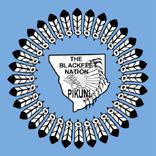
–
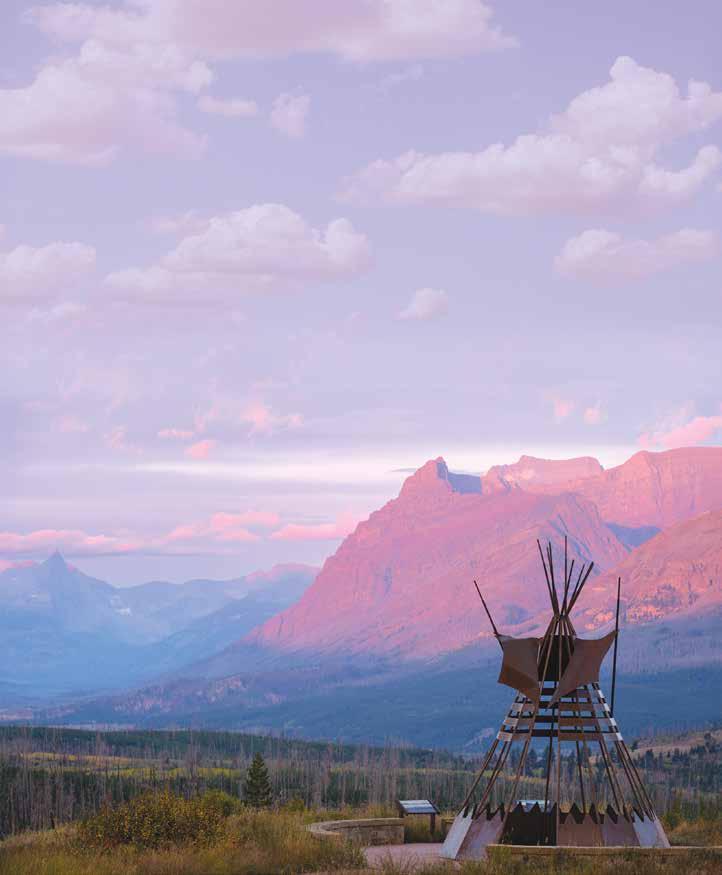
Holiday Inn Missoula Downtown 200 South Pattee Missoula, MT 59802 (406) 532-2046 I holidayinn.com/missouladwtn AGENDA
AUG 19 Blackfeet Passions, Strengths and Needs for Health Economic Future | 9am–4pm
AUG 20 Blackfeet Opportunities, Solutions, and Plans to Overcome Barriers | 9am–4pm
AUG 21 Presentation to Potential Private, State, and Federal Funding Partners | 9am–noon Breakfast and Lunch Served 8/19 & 20, Breakfast Only 4/22




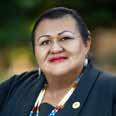
REINER LOMB is the President and Founder of BoomerangCoach. His mission is to mobilize and develop leaders that help create a more sustainable and positive future for all. That’s why he decided over a decade ago, at the height of his corporate career, to follow his passion and become an Executive Coach, specialized in leadership development, innovation and transformational change. He is the author of “The Boomerang Approach — Return to Purpose, Ignite Your Passion” and “ASPIRE: Seven Essential Emotions for Leading Positive Change, No Matter Where You Are” (both sold on Amazon). His expertise draws on more than 35 years of experience in global management roles in the U.S. and Germany and spans multiple industries with companies such as Hewlett-Packard, Sperry Univac (Unisys) and several European Companies. He was part of the Fort Collins, Colorado Climate Taskforce to help shape the city’s climate policies and since 2015 has supported the leadership of the Ute Mountain Ute Tribe, Colorado in transforming their community. Reiner has earned an MBA in Sustainable Business from Pinchot University (now Presidio) and a master’s degree in Computer Science from the University of Paderborn (Germany).
KARINA BRANSON is a visual facilitator, founder, and owner of ConverSketch where she uses hand-drawn images and text to reflect and distill the key ideas as graphic recording charts. With a master’s degree in science communication, Karina’s scientific training and an innate ability to connect with people across cultures creates a unique blend of intelligences that enable her to synthesize and creatively capture meaningful content. She has facilitated and supported collaborative strategic planning, community engagement, innovative brainstorming and critical systems thinking to help groups move forward and into action. She has worked across academic, corporate, governmental, and non-profit sectors. Her clients are local and international, including Adobe, Cisco Systems, International Science Council; Future Earth; the National Security Agency; a multi-generational family of wealth; the United Nations University; Arizona State University; the National Park Service; the US Forest Service; The Center for Public Deliberation; and others.
BEVERLY SANTICOLA is an award-winning film producer, social entrepreneur, idea generator, problem solver, program developer, project facilitator, public speaker and grant writing consultant. Over the past ten years Santicola has focused her expertise and energy in the arenas of community development and collaborative partnership building for Native American tribes. She works with a team of professional grant writers that have generated more than $1 billion in grant funding for clients and more than $166 million for the UMUT. She has been nationally recognized for social innovation and leadership excellence by the U.S. Department of the Interior, Bureau of Indian Affairs, as well as Encore.org as a 2010 and 2014 Purpose Prize Fellow.
MARC H. SANTICOLA is a retired financial/accounting executive with over 40 years of experience in manufacturing and the energy industry. He held various Controllership and Director of Finance positions with Fortune 500 companies (Schlumberger, Cameron International, Cooper Industries, Smith International) at the corporate, divisional and plant levels working in executive leadership, project management, financial planning, systems implementation, organizational restructuring and divestiture. Marc holds a MBA degree from the University of Pittsburgh and is now working as a consultant with NeoFiber on the Tribe’s $40 million Broadband Initiative.
BERNADETTE CUTHAIR is an award-winning leader and member of the Ute Mountain Ute Tribe. Since 1993 she has held professional roles balancing her demonstrations of strong leadership with a deep interest in serving her community. Her background spans paralegal roles, investment coordination and consulting. Between 2015 and 2025 she managed more than $150 million in community and economic grant projects. She has been recognized by the U.S. Department of Energy as an Indian Energy Champion and received the Dr. Virgilio Licona Community Health Leadership Award from the Colorado Health Foundation.
Pat Armstrong Blackfeet Tribal Business Councilman p armstrong@blackfeetnation com l l l
Everett Armstrong Blackfeet Tribal Business Councilman e armstrong@blackfeetnation com l
Michelle Brown Blackfeet Tribe Acting Tribal Health CEO mbrown@blackfeetnation com l l l
Kristy Bullshoe Blackfeet Tribal Business Council krisbs@blackfeetnation com l l l
Paulette Butterfly Blackfeet Planning p butterfly@blackfeetnation com l l l
Michael ComesAtNight Blackfeet Tribal Business Councilman mikecan@blackfeetnation com l l l
Debra Davis Blackfeet Finance Department d davis@blackfeetnation com l l l
Donelle DeRoche Blackfeet Revenue d deroche@blackfeetnation com l l l
Dennis Fitzpatrick Siyeh, Inc dfitzpatrick@siyehinc com l l l
Dale Fox Blackfeet Noxious Weed Program dale fox@blackfeet com l l l
Rodney Gervais Blackfeet Tribal Business Council rodg@blackfeetnation com l l l
Andrea Ground Blackfeet Tribe Legal Assistant a ground@blackfeetnation com l l l
Venissa Guardipee Blackfeet Planning vkipp@blackfeetnation com l l l
Brad Hall Blackfeet Community College brad@bfcc edu l l l
Shelly Hall Blackfeet Tribal Business Council s hall@blackfeetnation com l l l
Terydon Hall Blackfeet Tribe Attorney terydon h@blackfeetnation com l l l
Earl Heavyrunner Blackfeet Food Distribution eheavyrunner@blackfeetnation com l l l
Eileen Henderson Blackfeet Transportation ehenderson@blackfeetnation com l l l
Derek Kline Blackfeet Tribe Attorney dkline@bkackfeetnation com l l l
Patricia Kuka Blackfeet Procurement tkuka@blackfeetnation com l l l
Galbreth Kwebb Blackfeet Water Department kwebb@blackfeetnation com l l l
Cleo Main Blackfeet Tribal Business Councilwoman cleom@blackfeet com l l l
Carl Mc Lean Blackfeet Tribe c mclean@blackfeetnation com l l l
Carla McLean-Torosian Blackfeet Child and Family Services c torosian@blackfeetnation com l l l
Billy Old Chief Blackfeet Tribe Land Department b oldchief@blackfeetnation com l l l
Randi Parsons Blackfeet Tribe rparsons@blackfeetnation com l l l
Mitzi Racine Blackfeet Grant Writer m racine@blackfeetnation com l l l
Fonda RedFox Blackfeet Tribal Health Department f redfox@blackfeetnation com l l l
Jenice Running Crane Blackfeet Water Department jrunningcrane@blackfeetnation com l l l
Mialynn Spoonhunter Blackfeet Child and Family Services m spoon@blackfeetfeetnation com l l l
Lydia Spotted Eagle Blackfeet Revenue lydia se@blackfeetnation com l l l
Jennifer St. Goddard Blackfeet Southern Peigan Health Center j stgoddard@blackfeetnation com l l l
Kandis Talks Different Blackfeet Transportation Department kanditd30@gmail com l l l
Tenniell Tatsey Blackfeet Tribe Credit Director tenniell@blackfeetnation com l l l
Sheldon Williamson Blackfeet Child and Family Services s williamson@blackfeetnation com l l l
